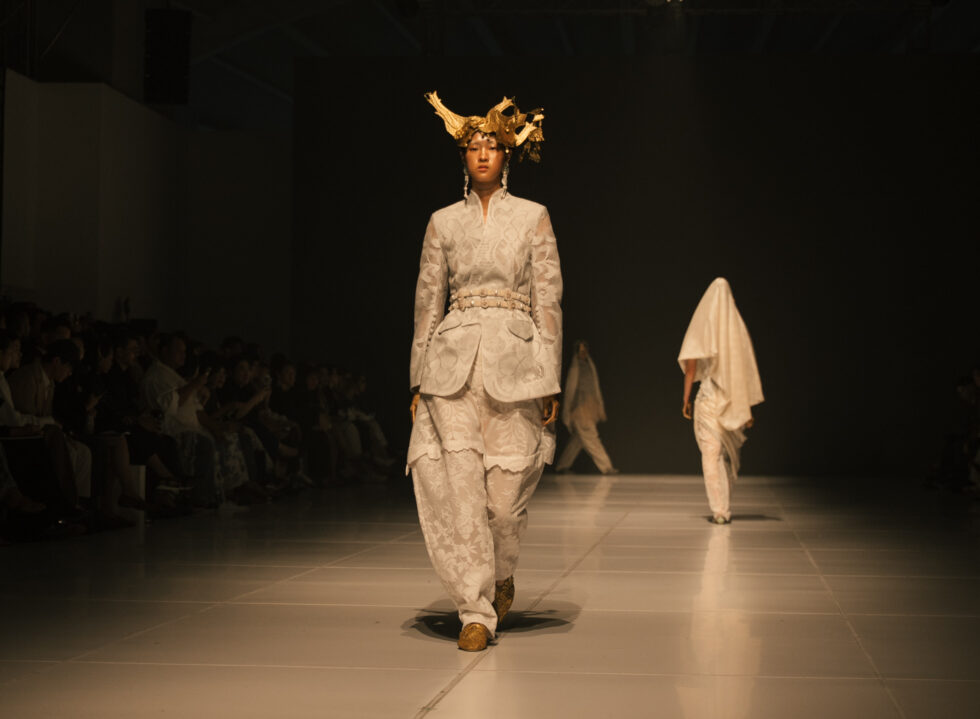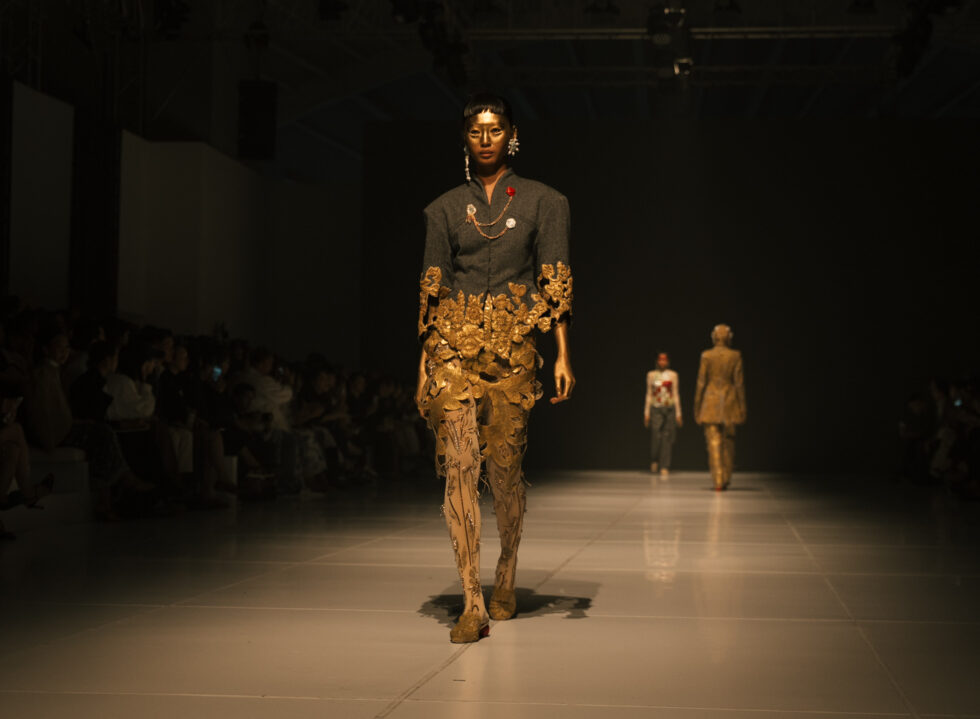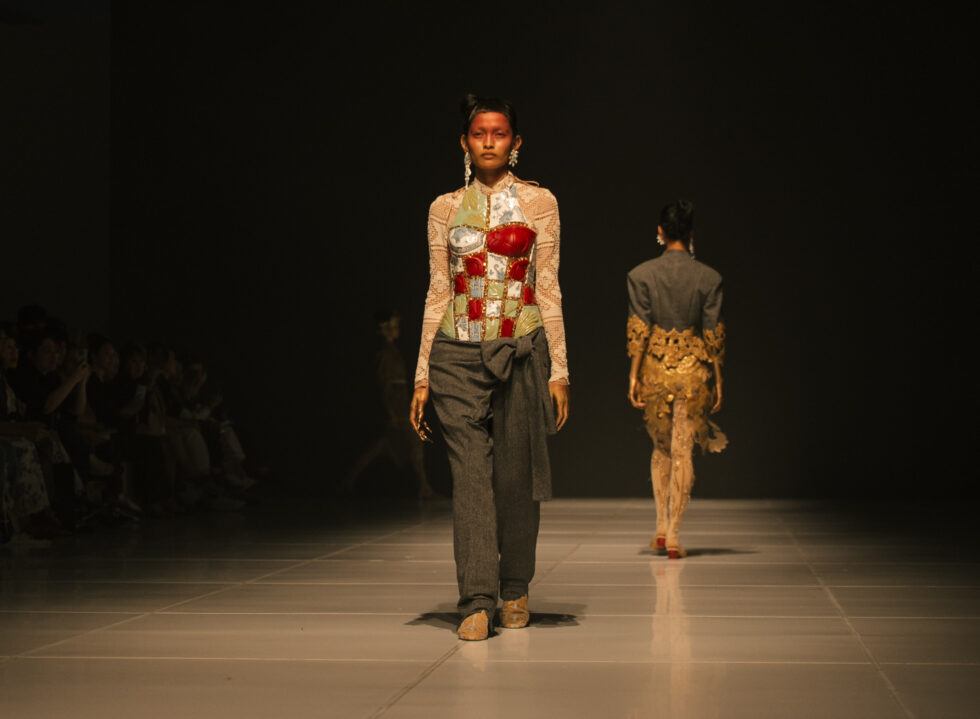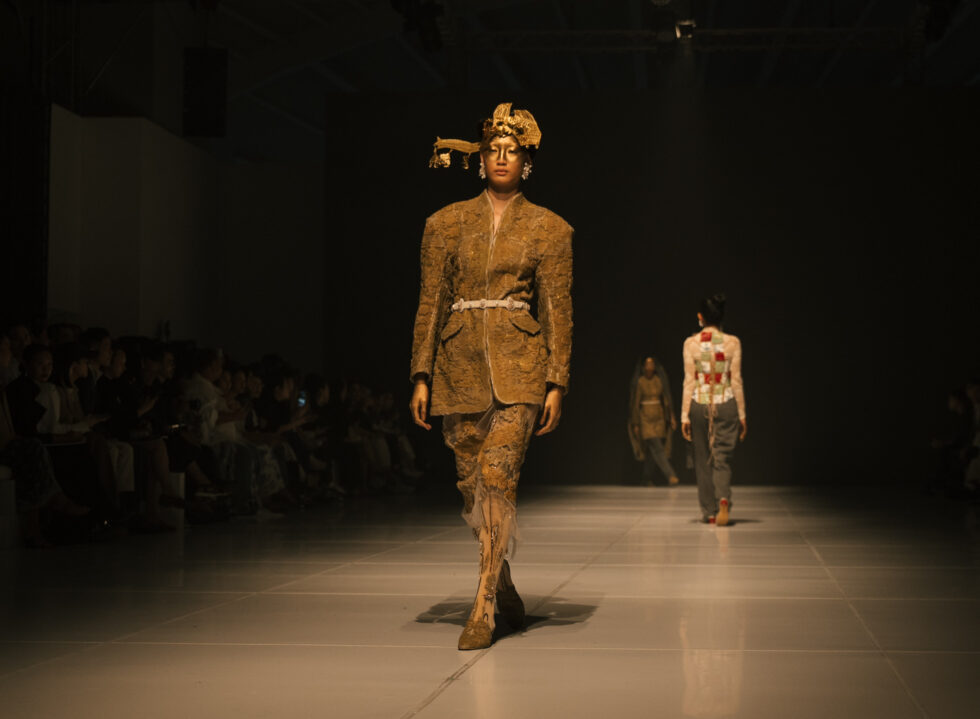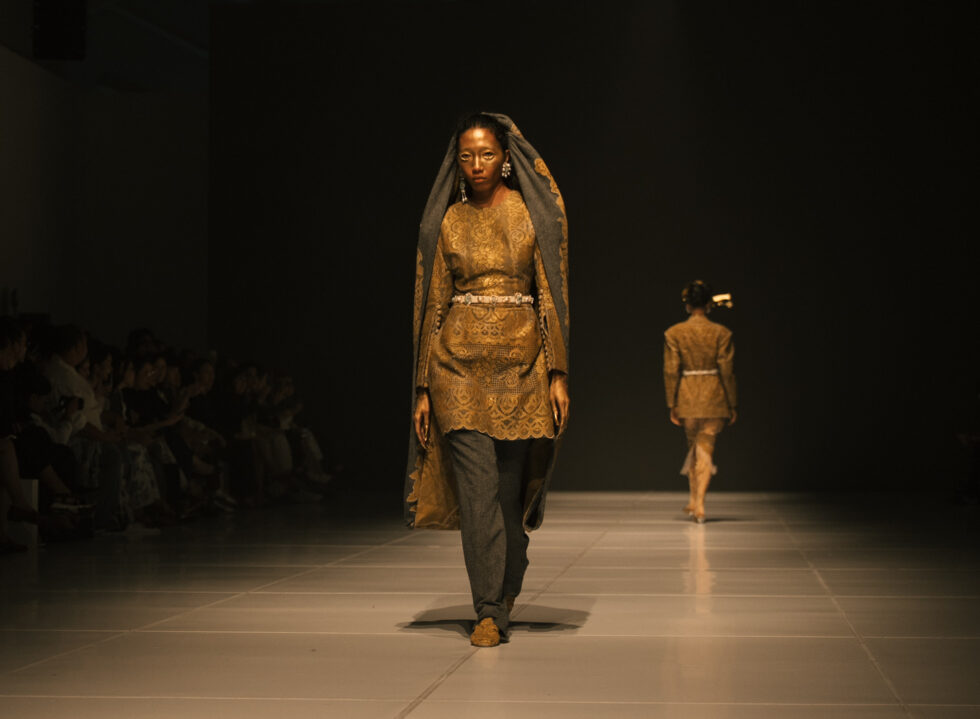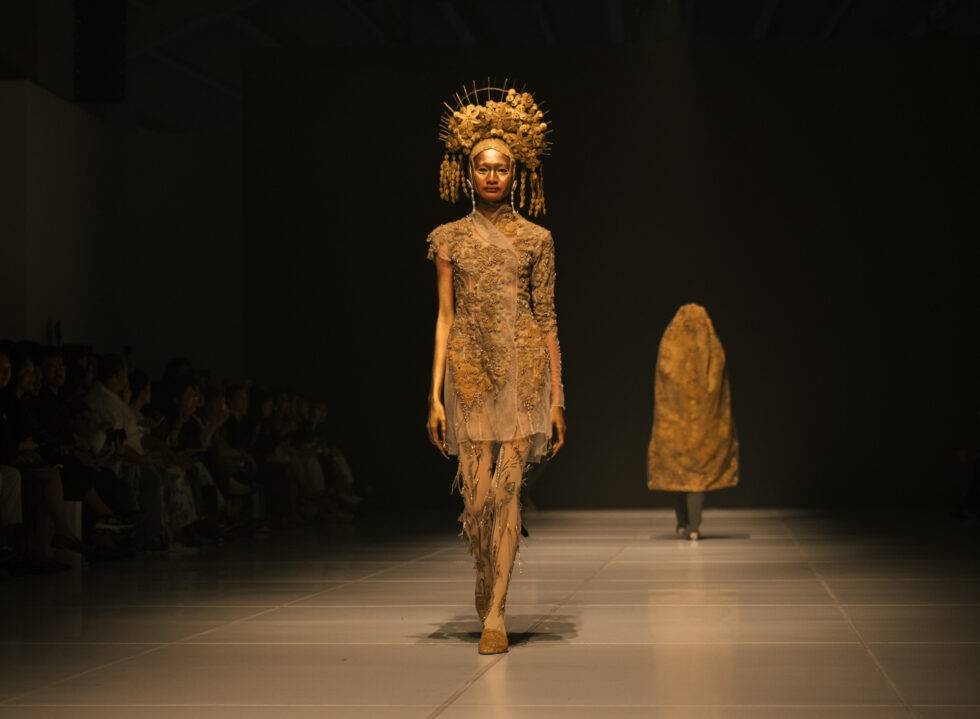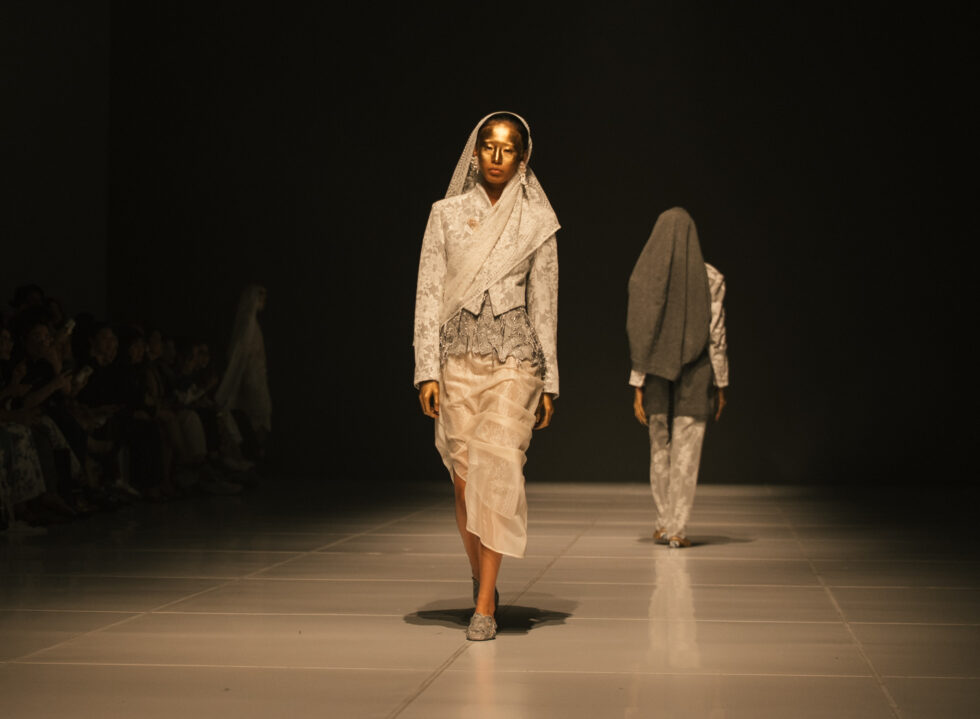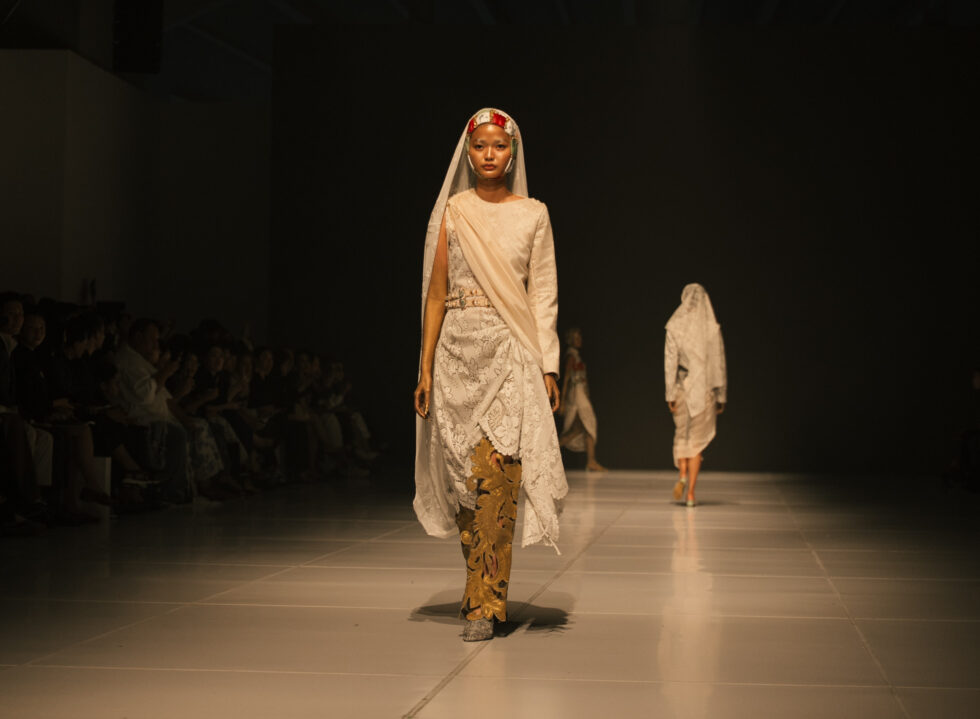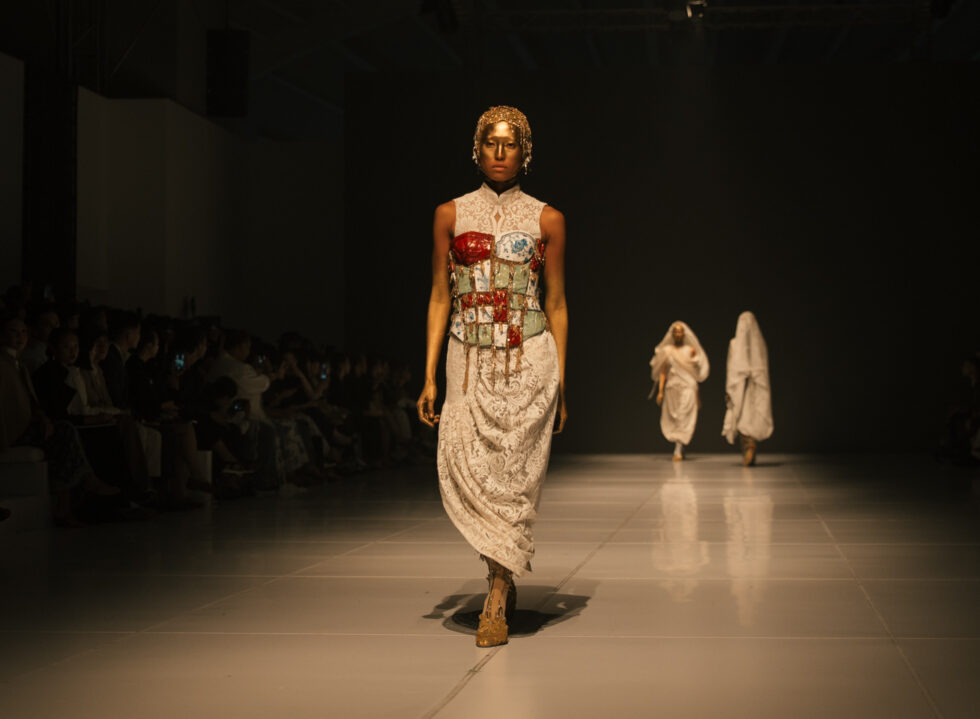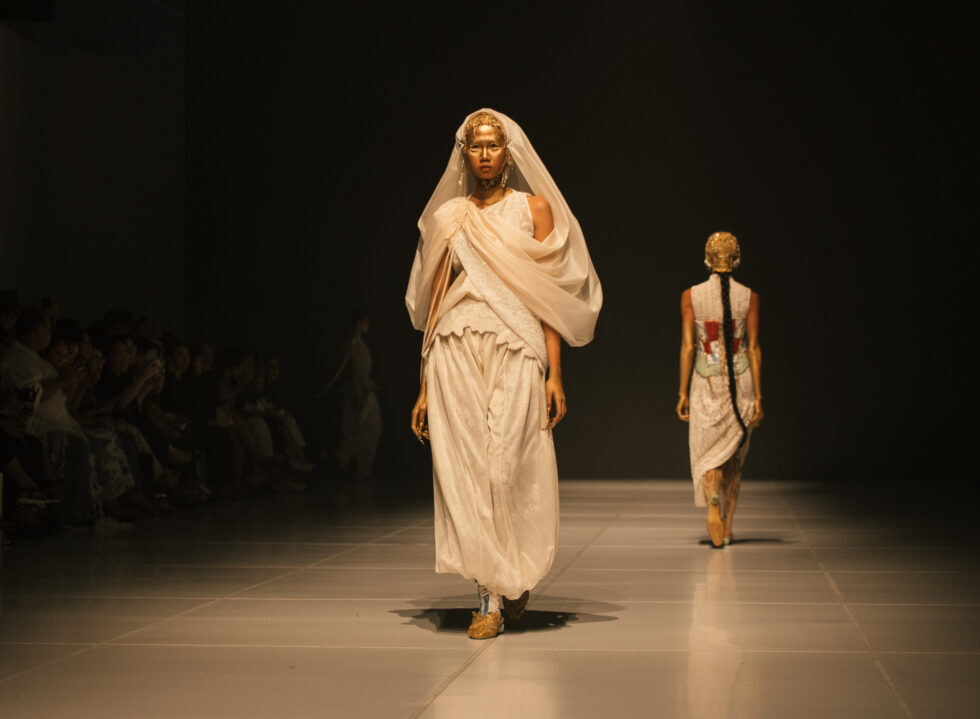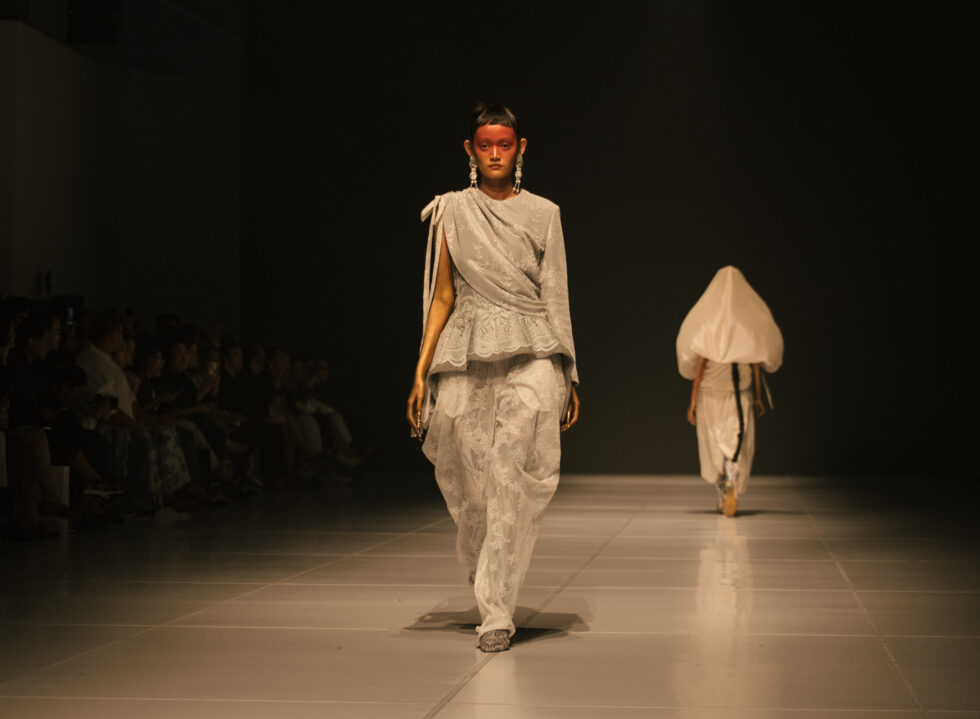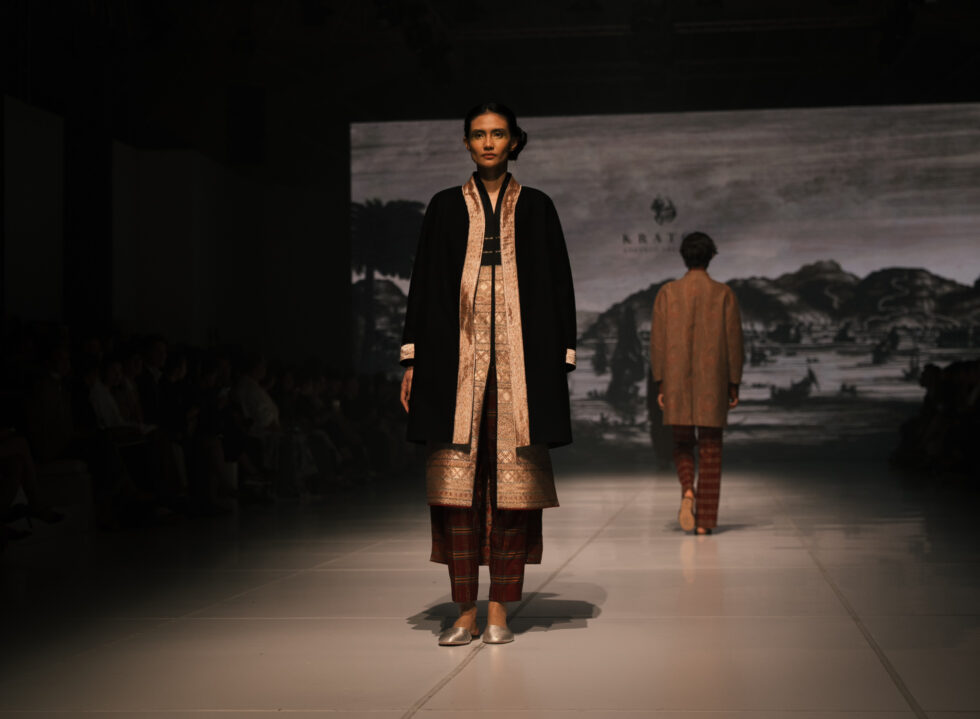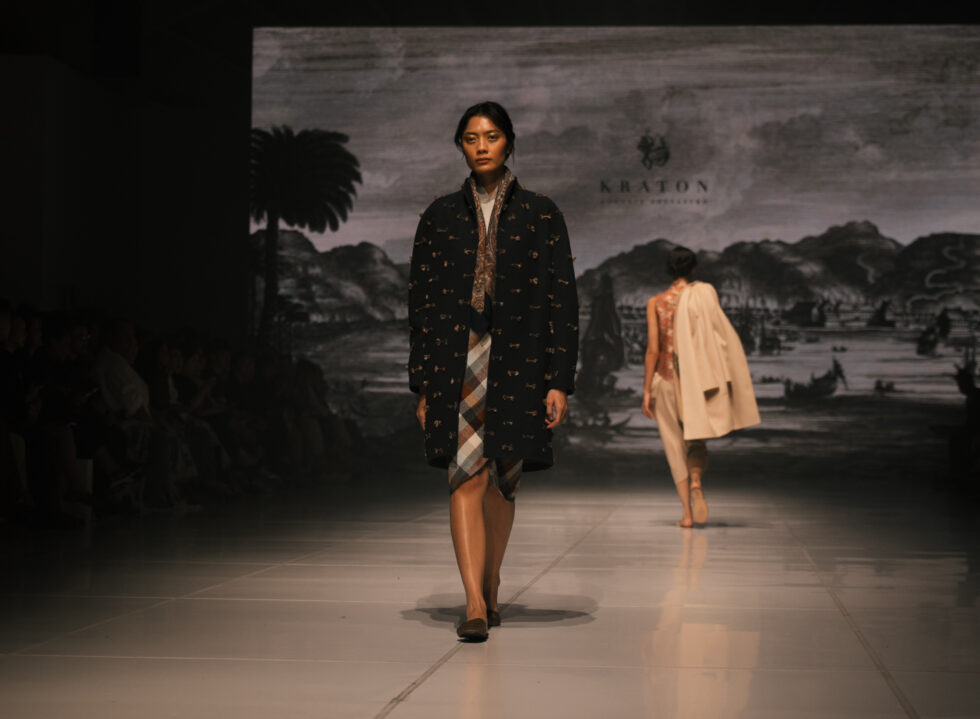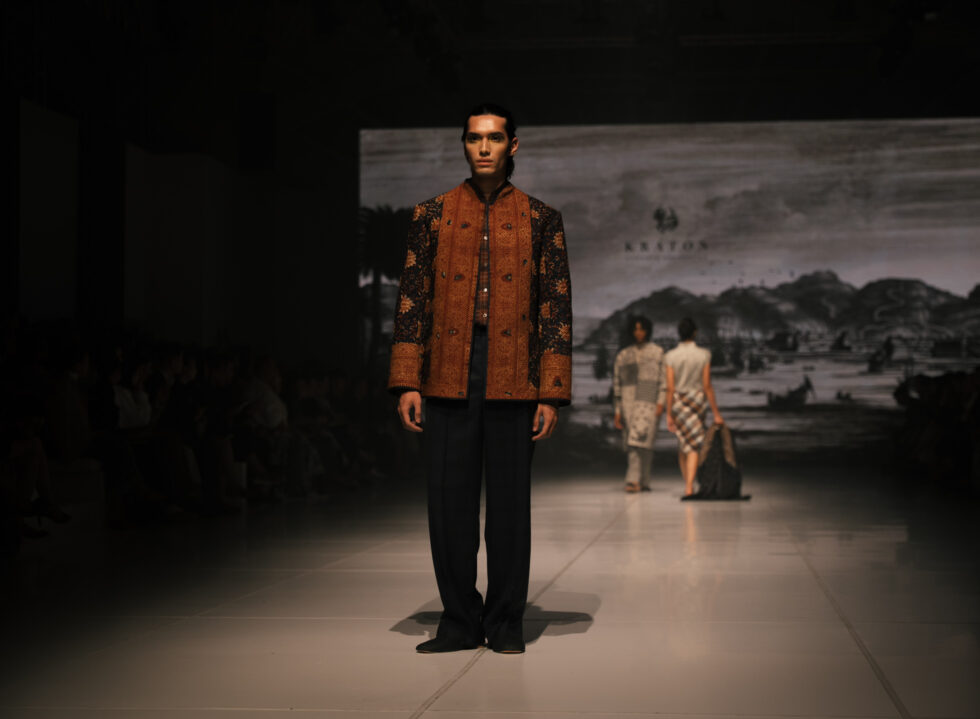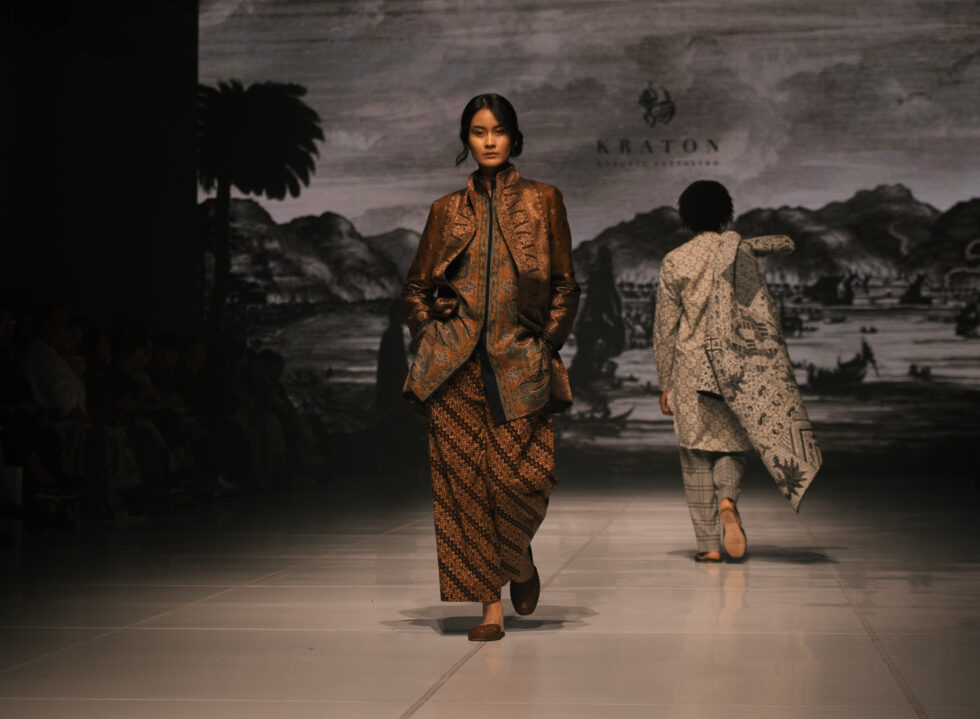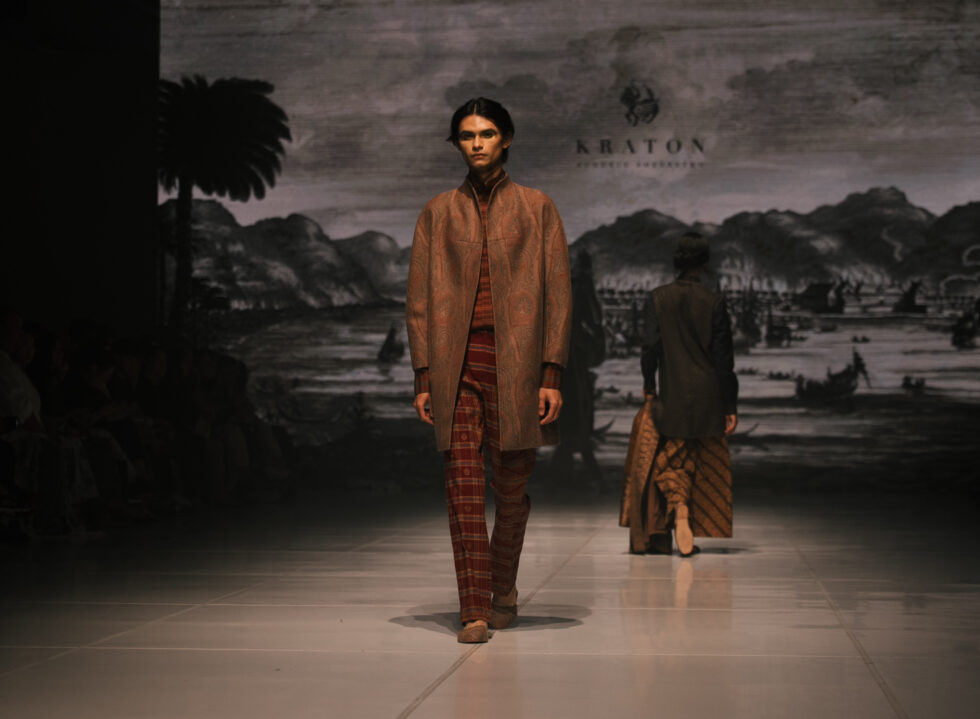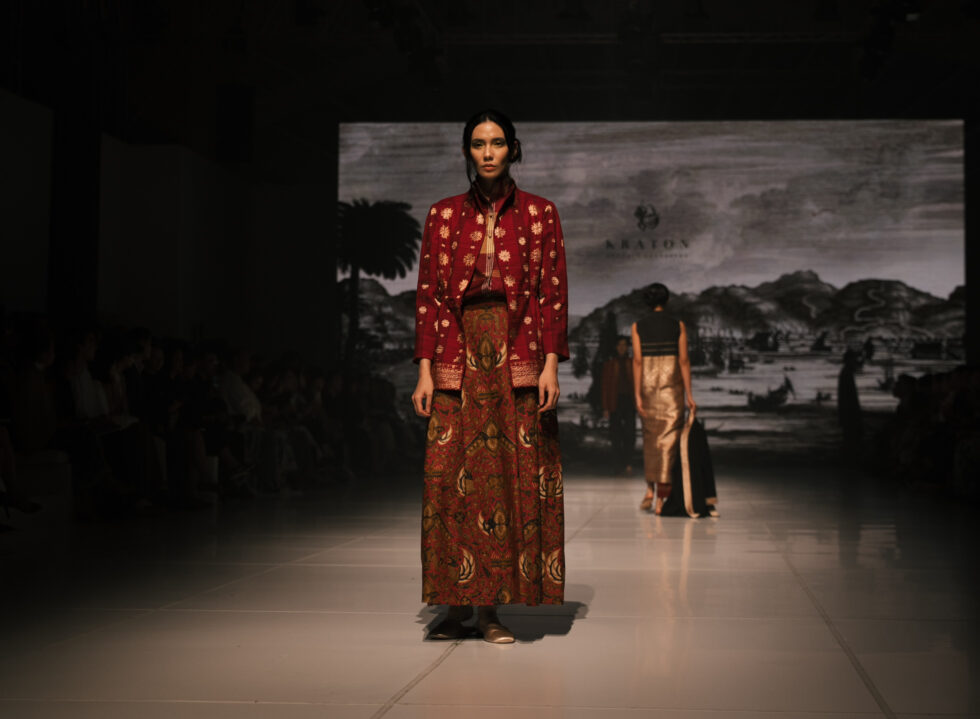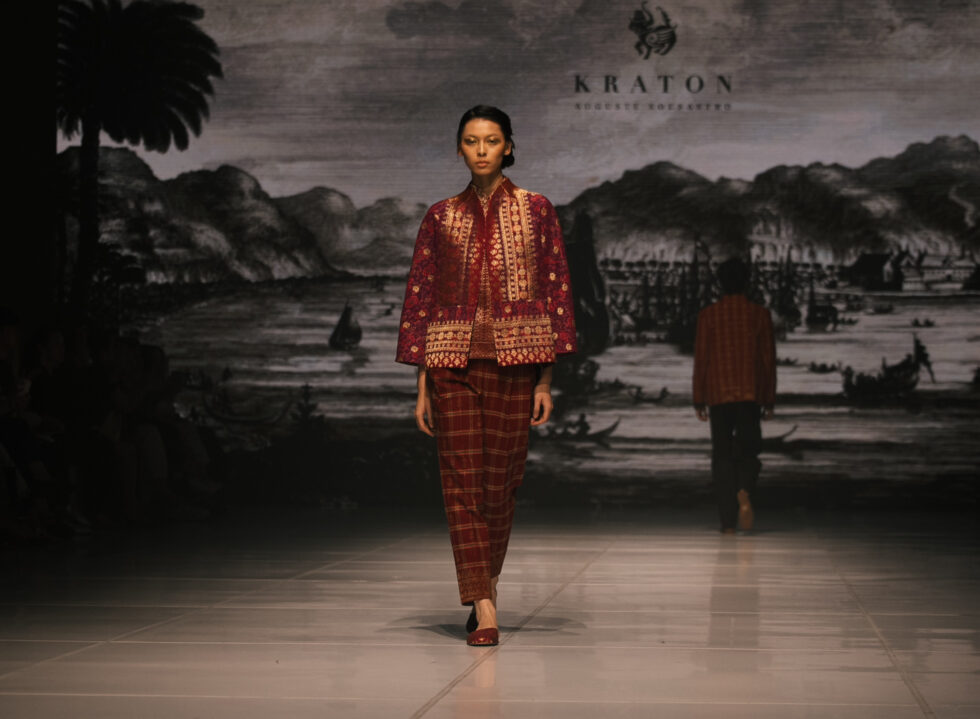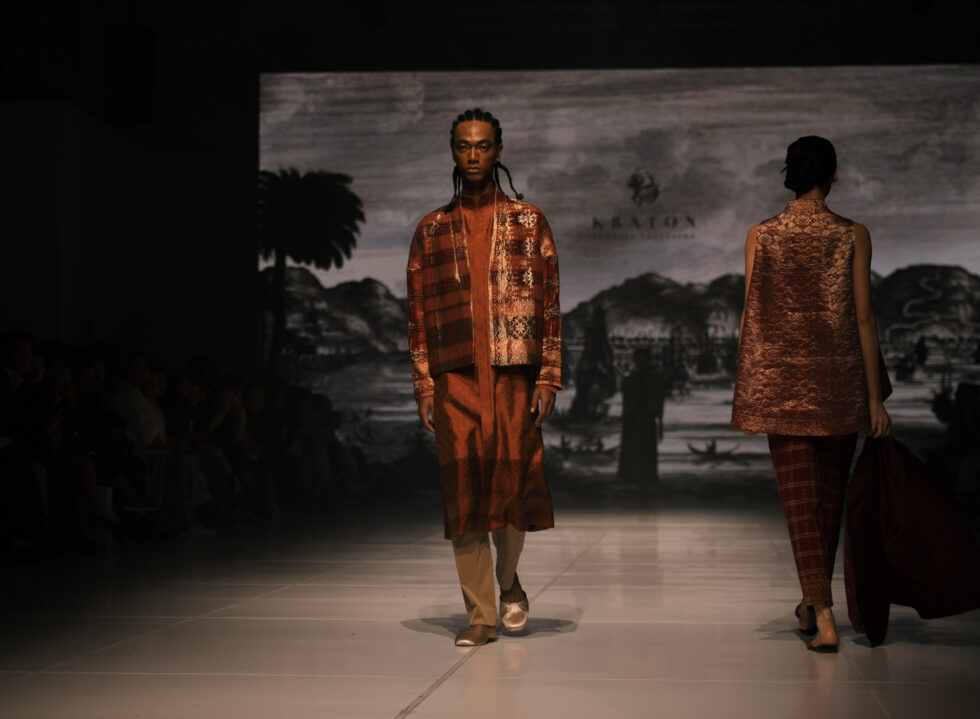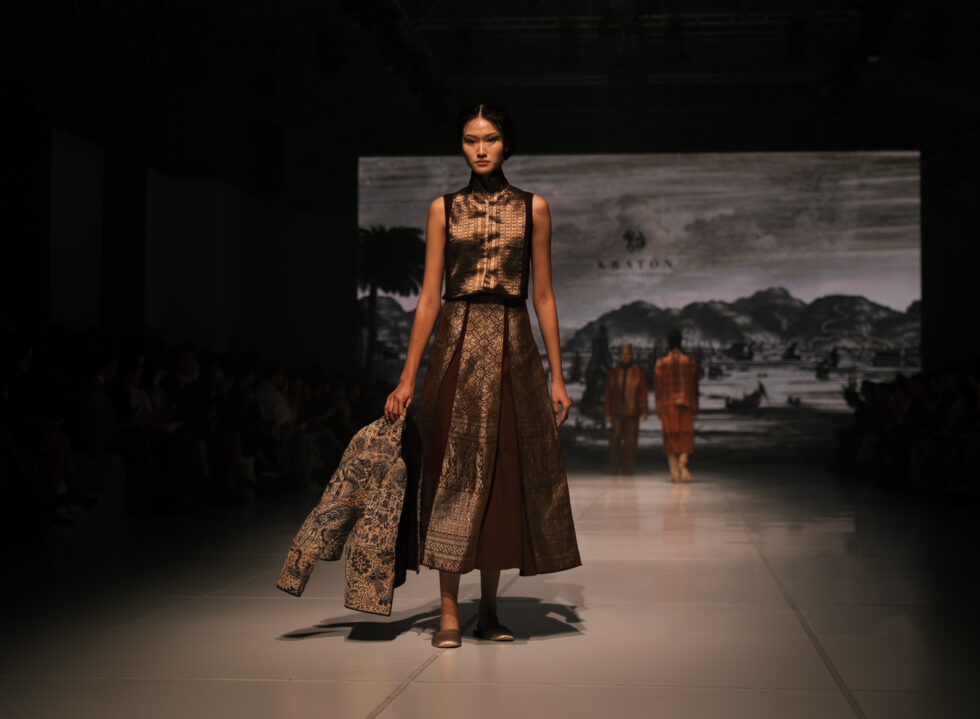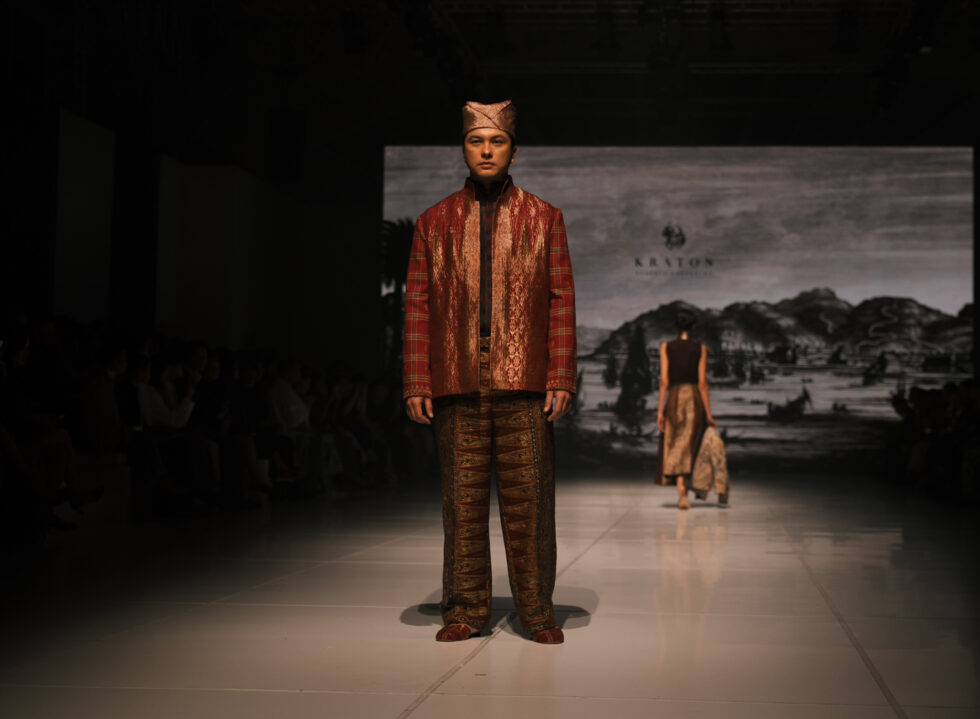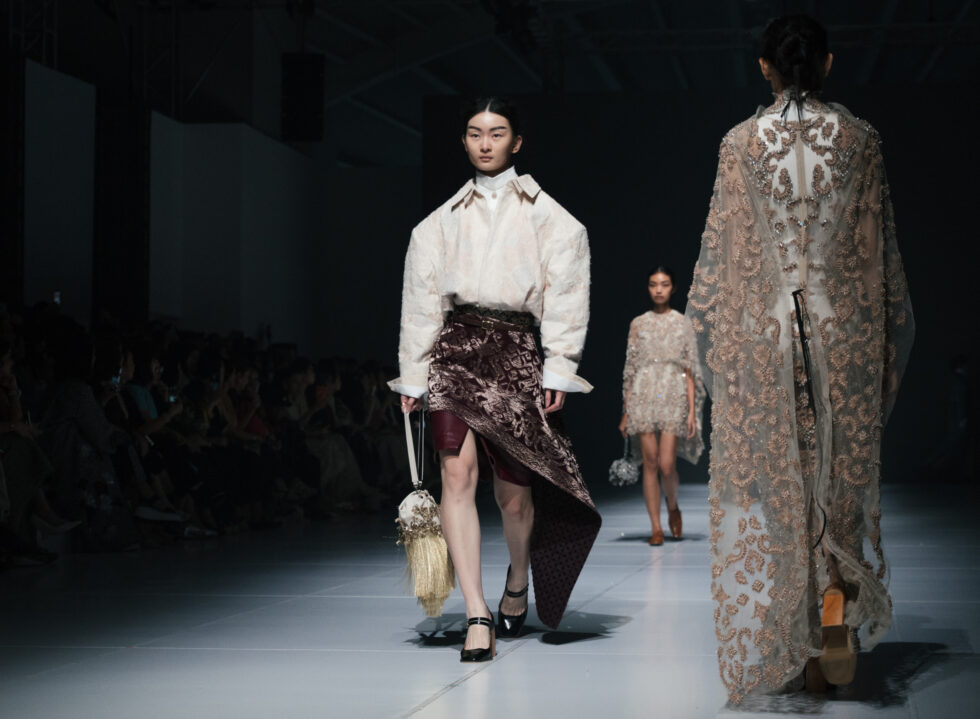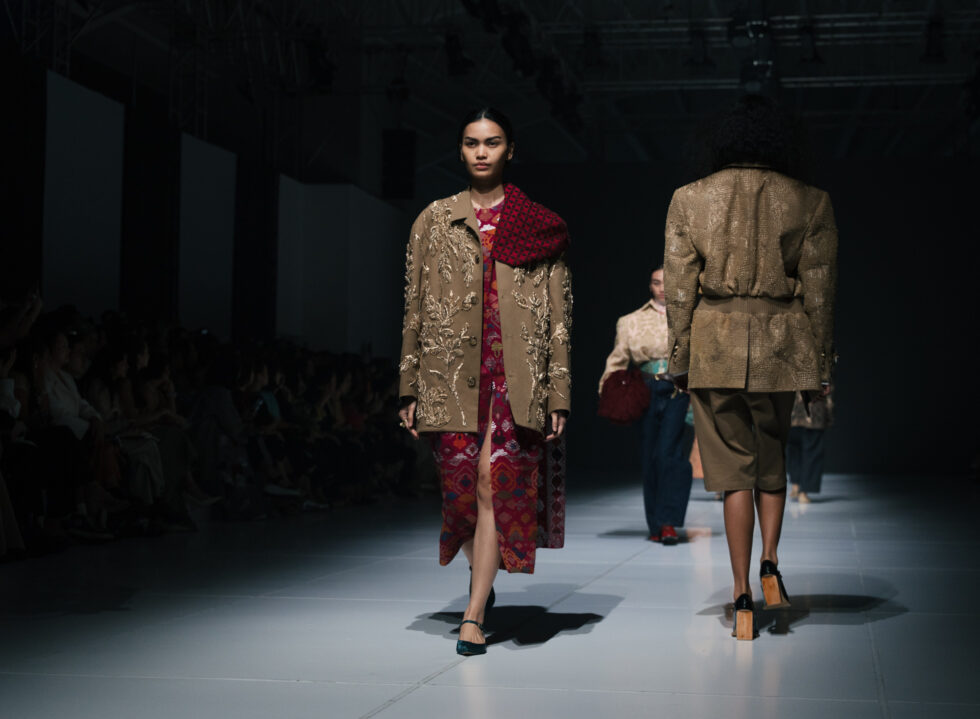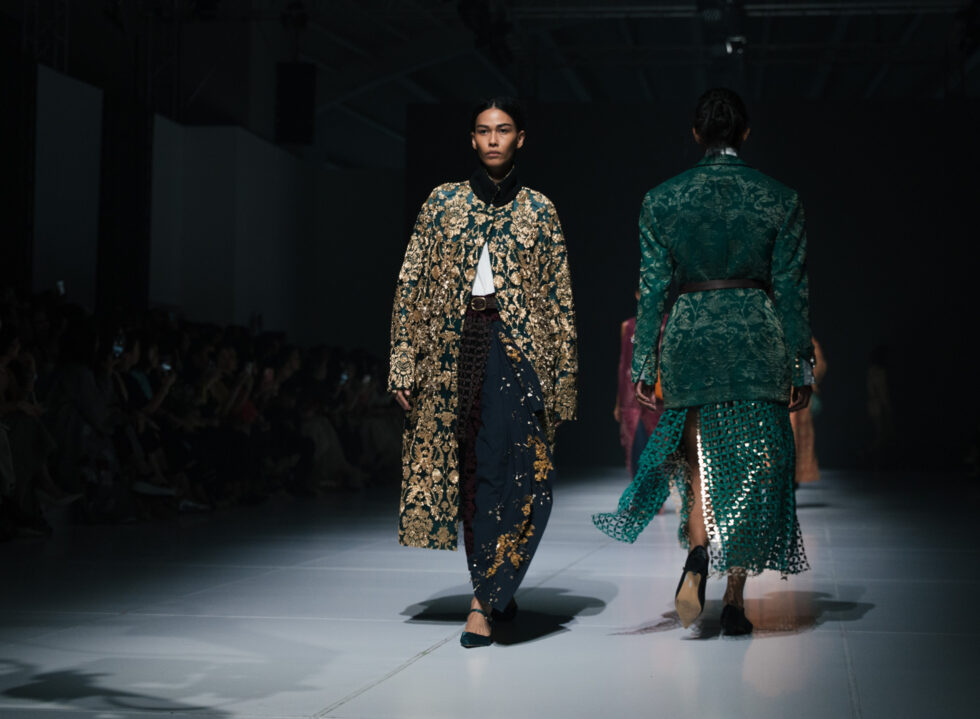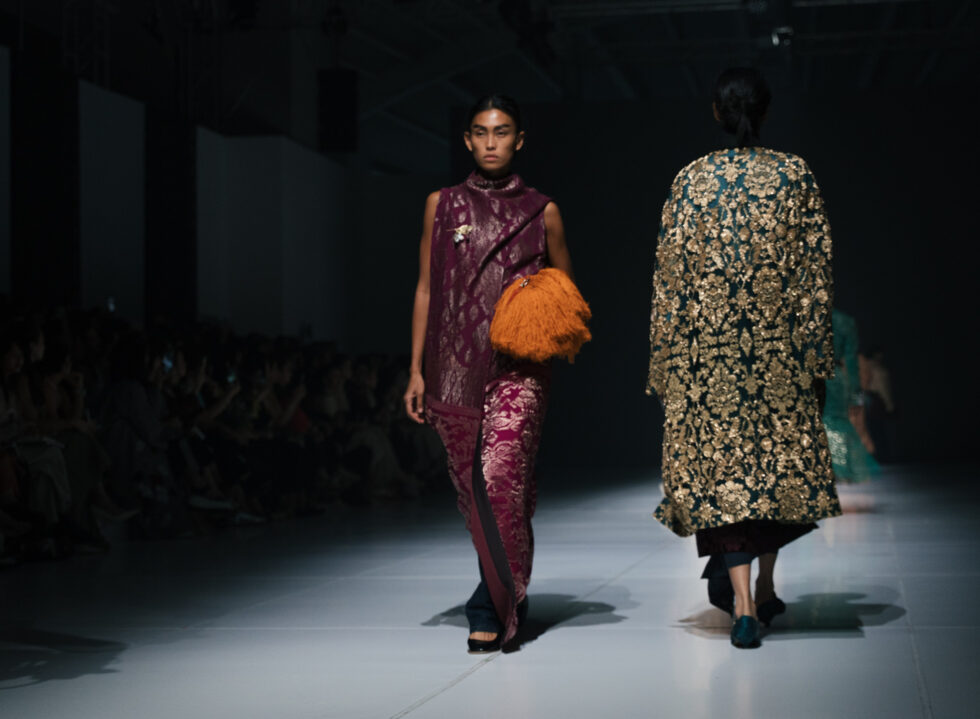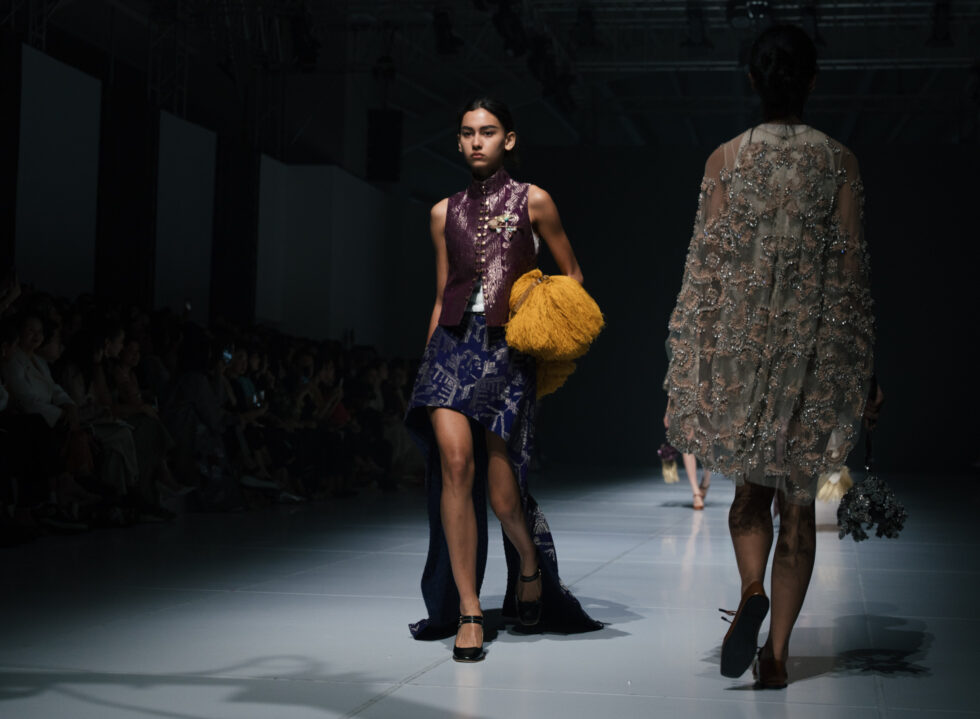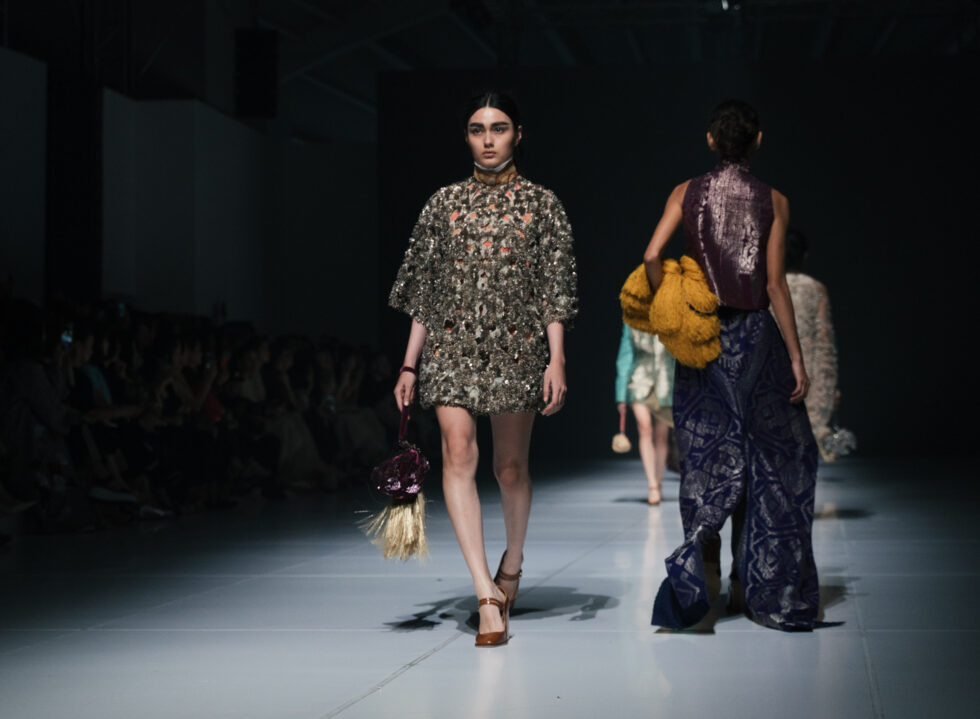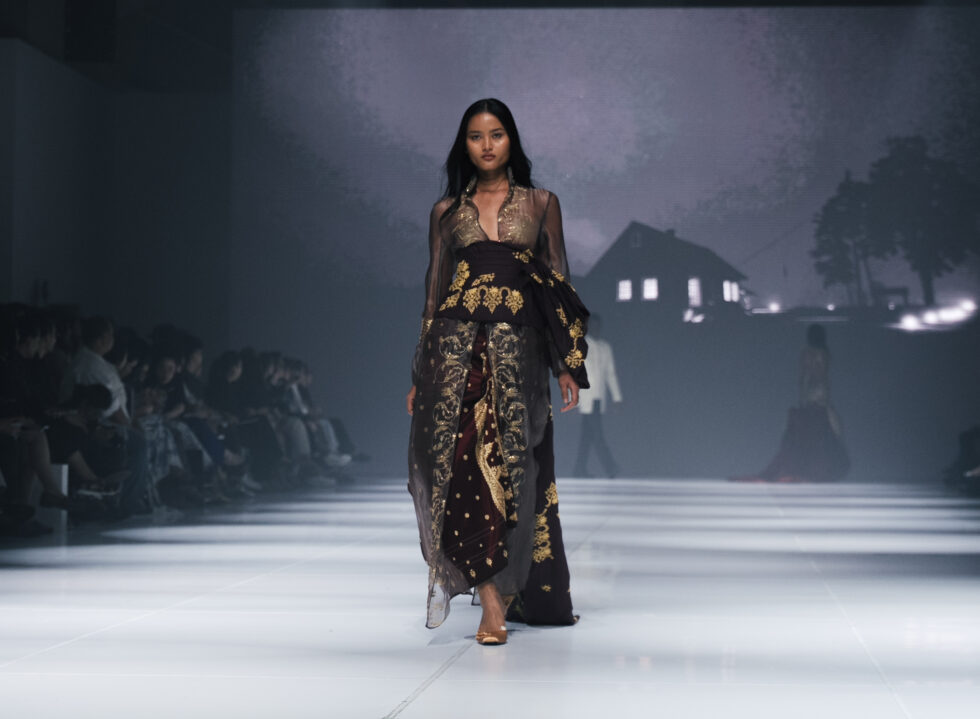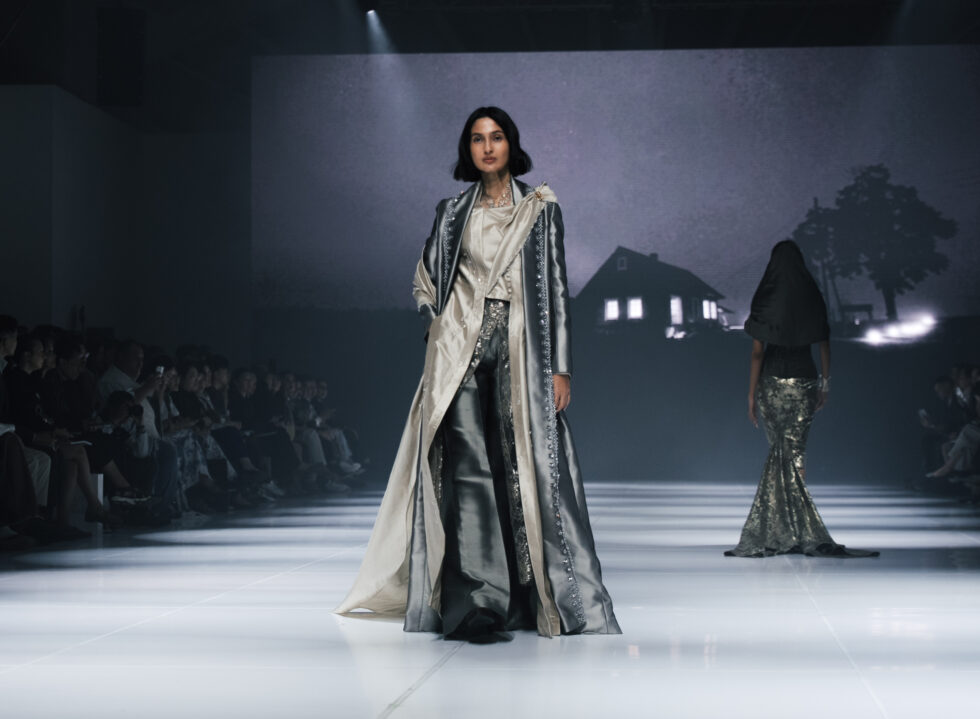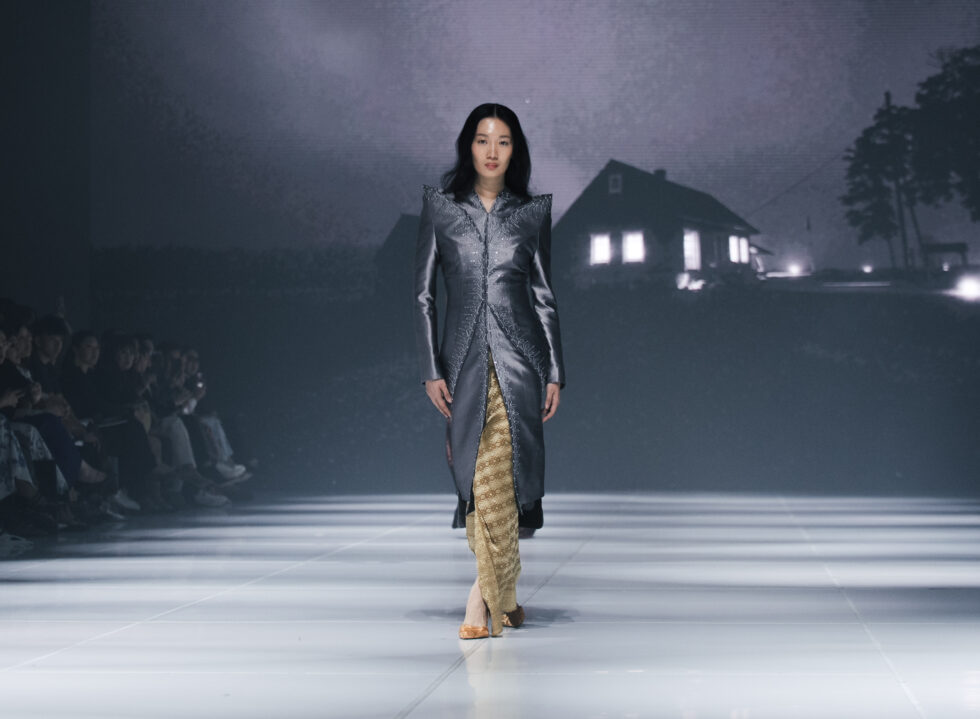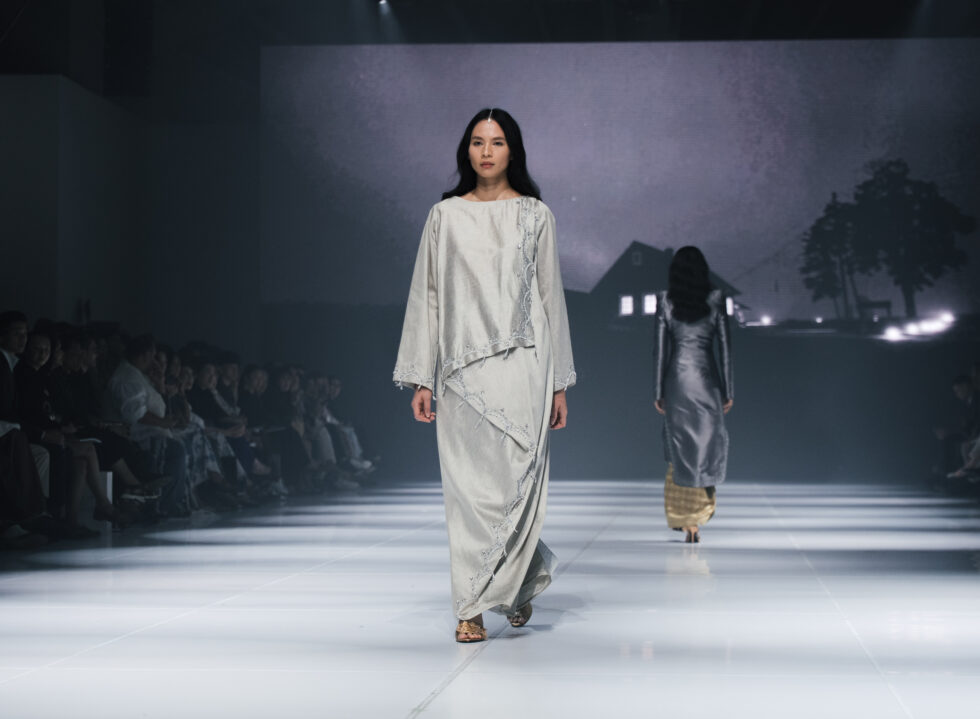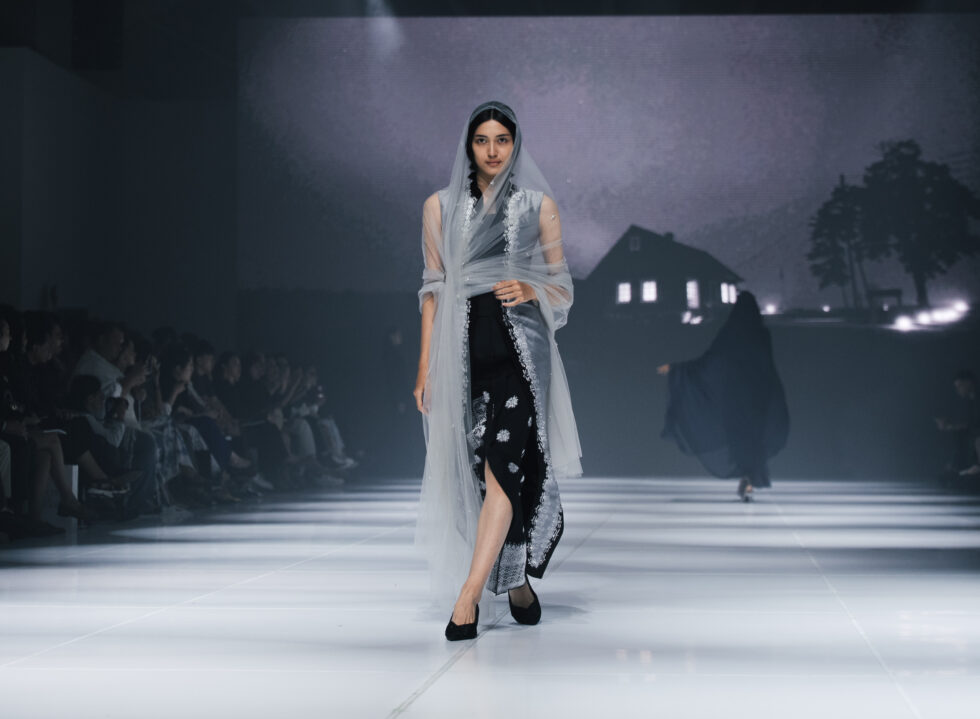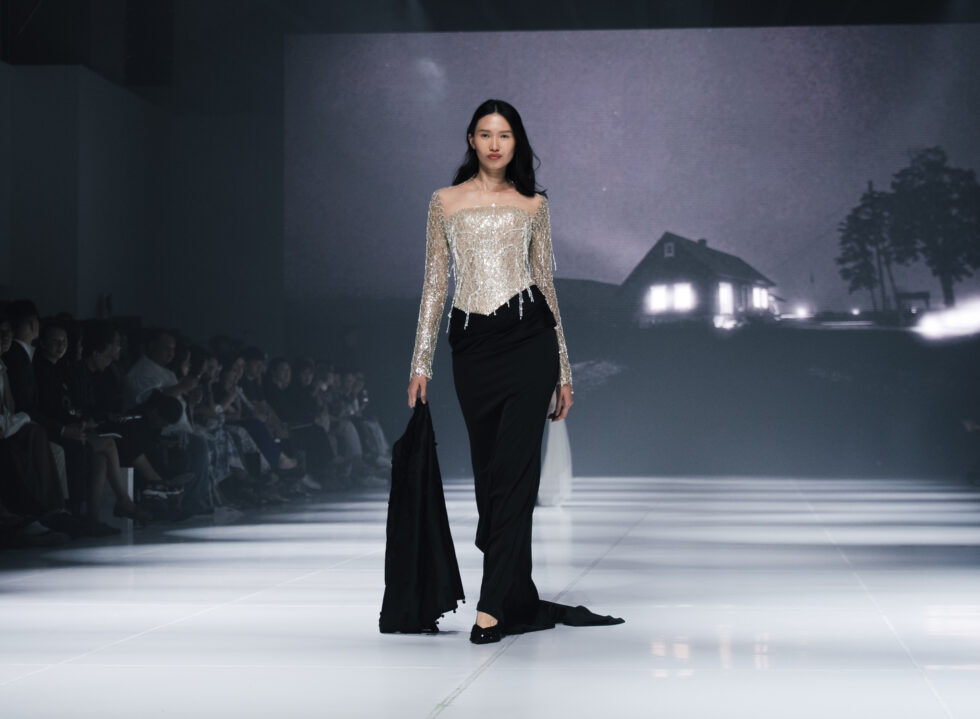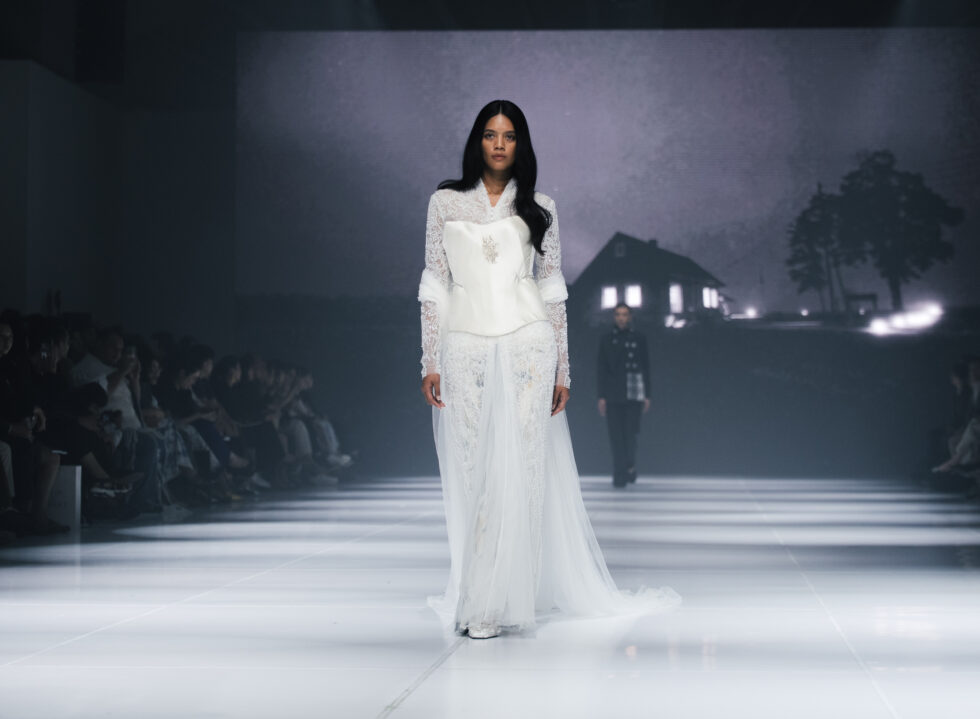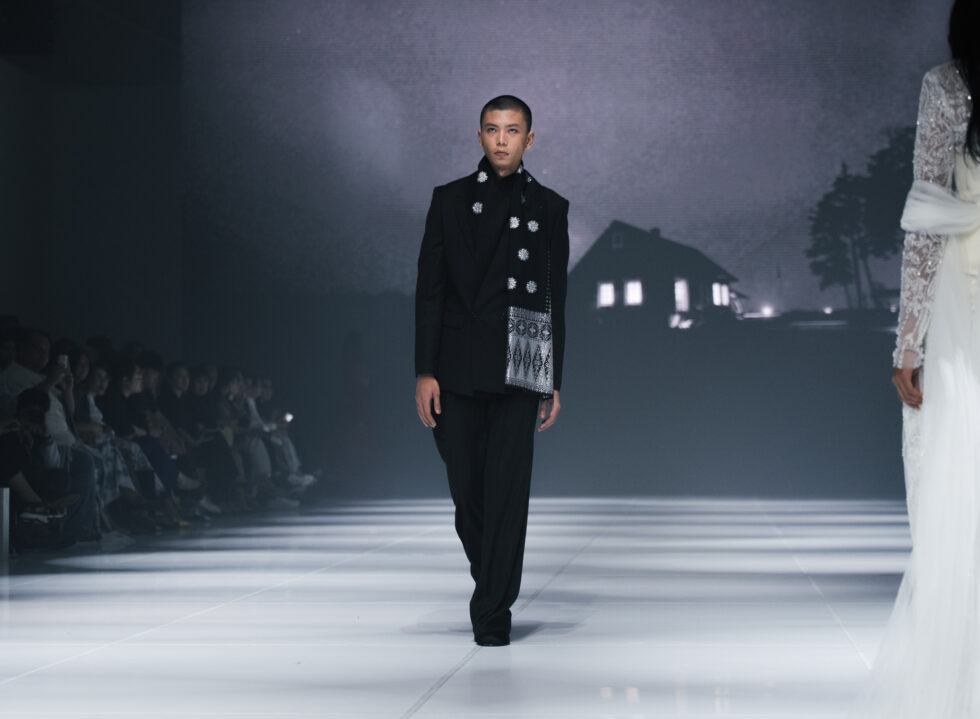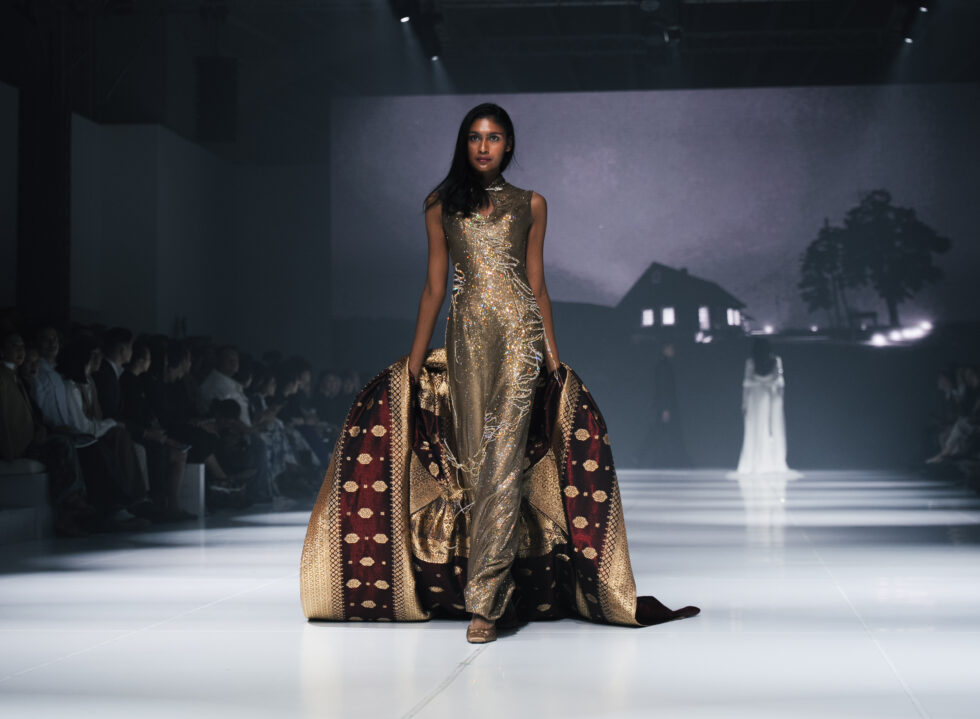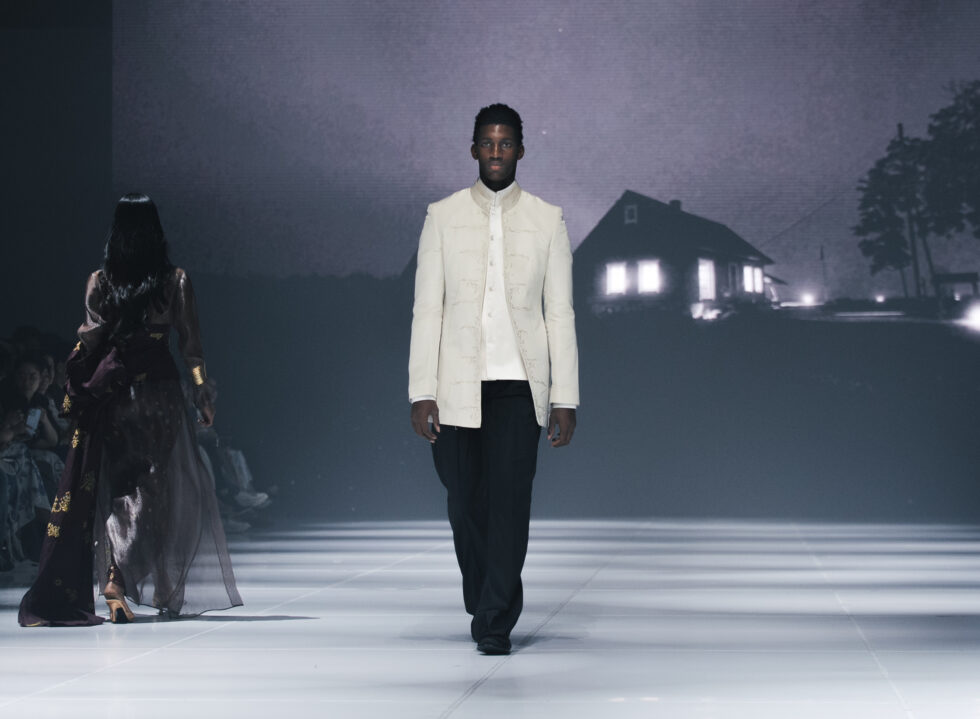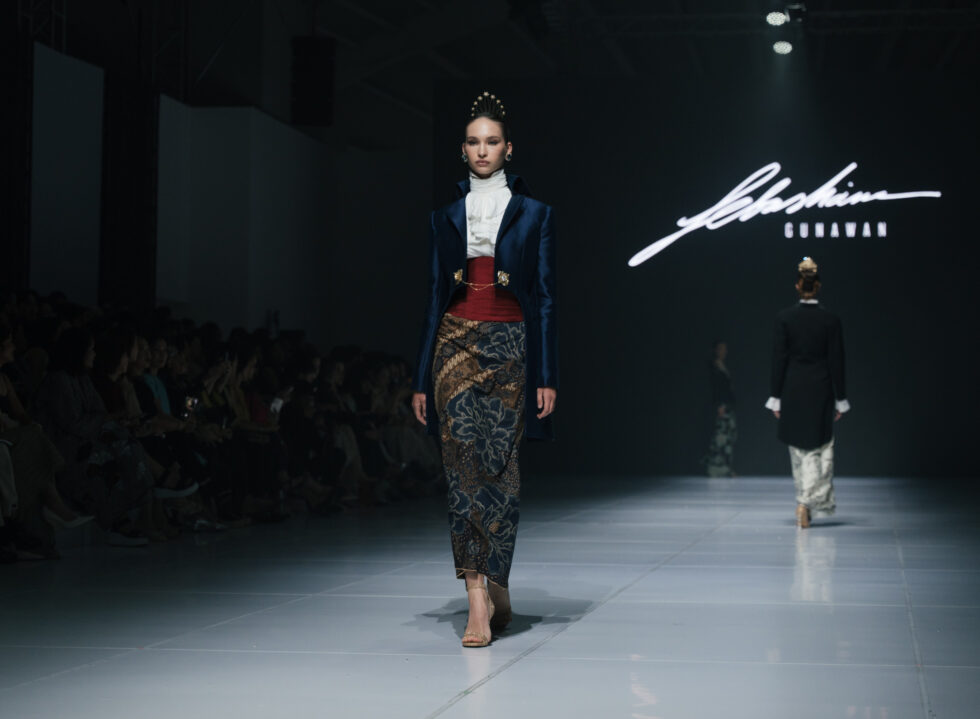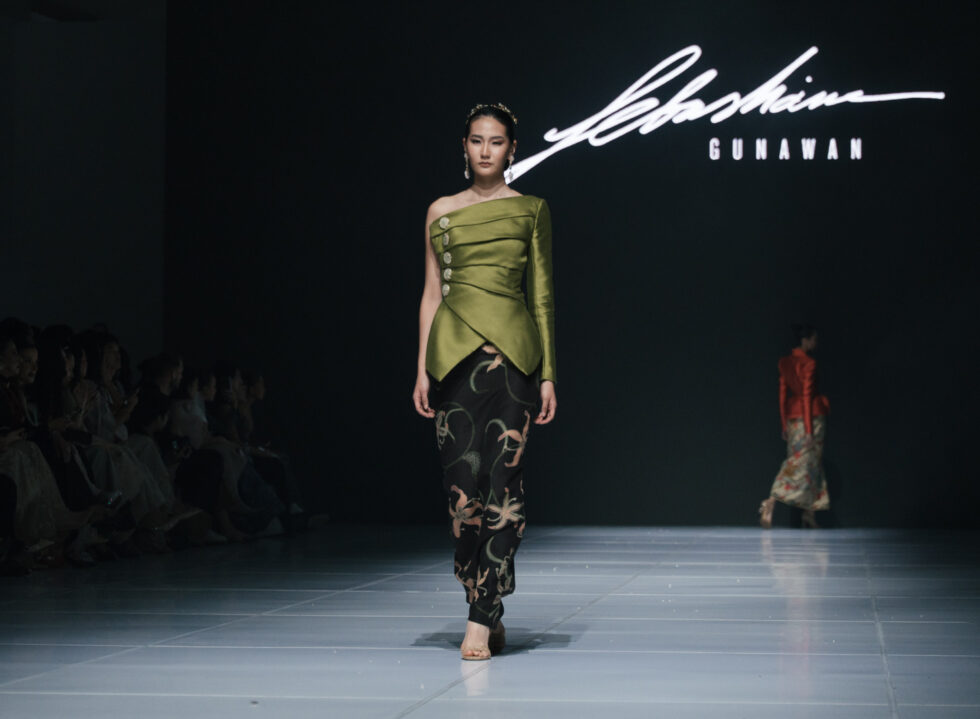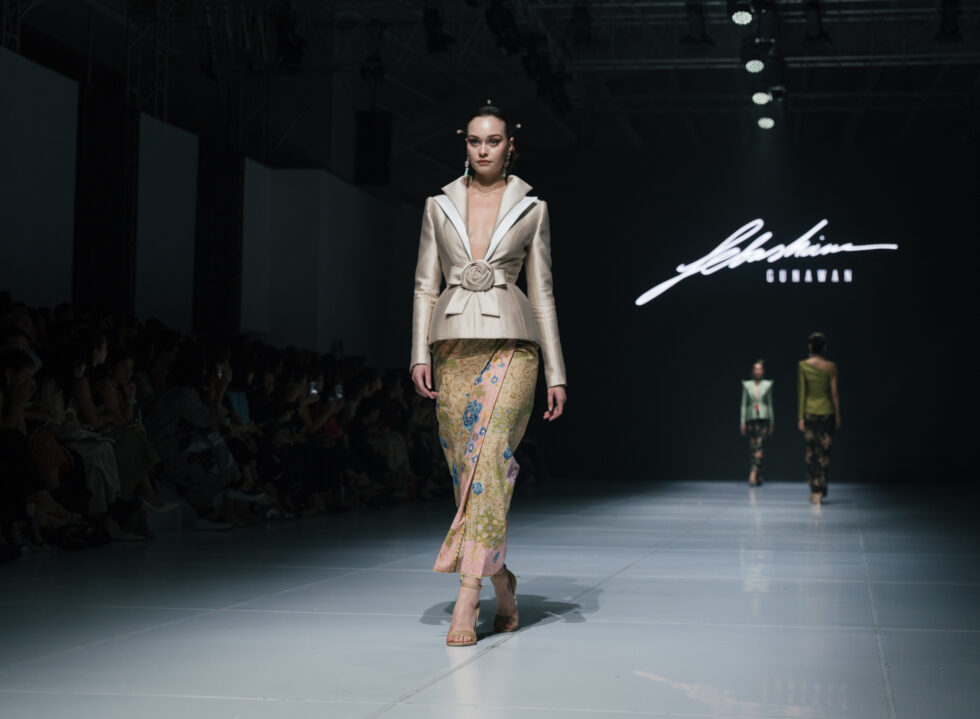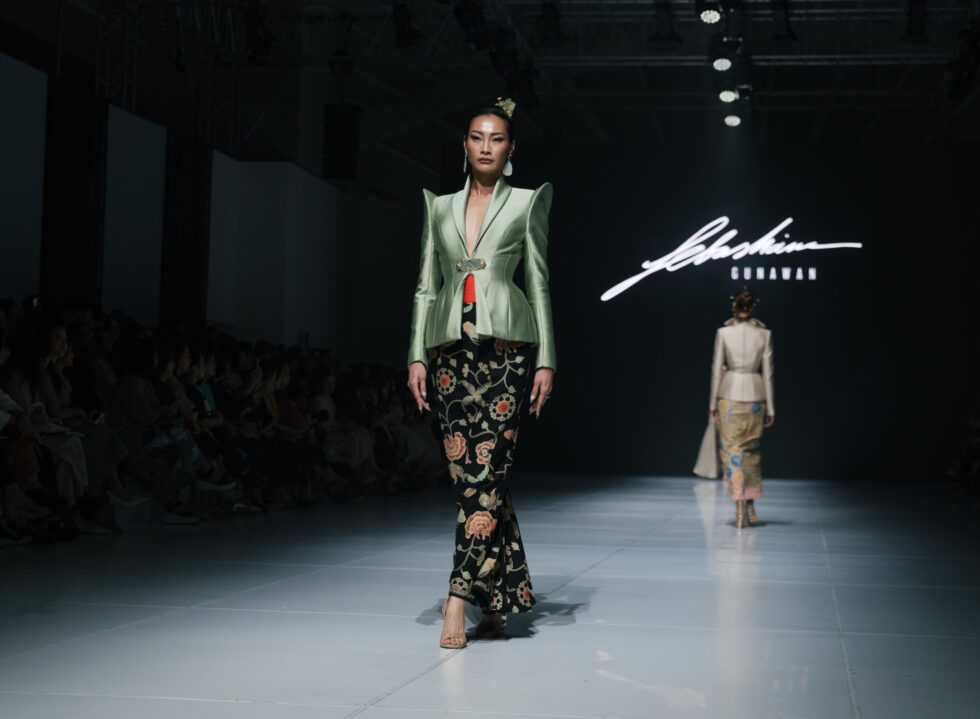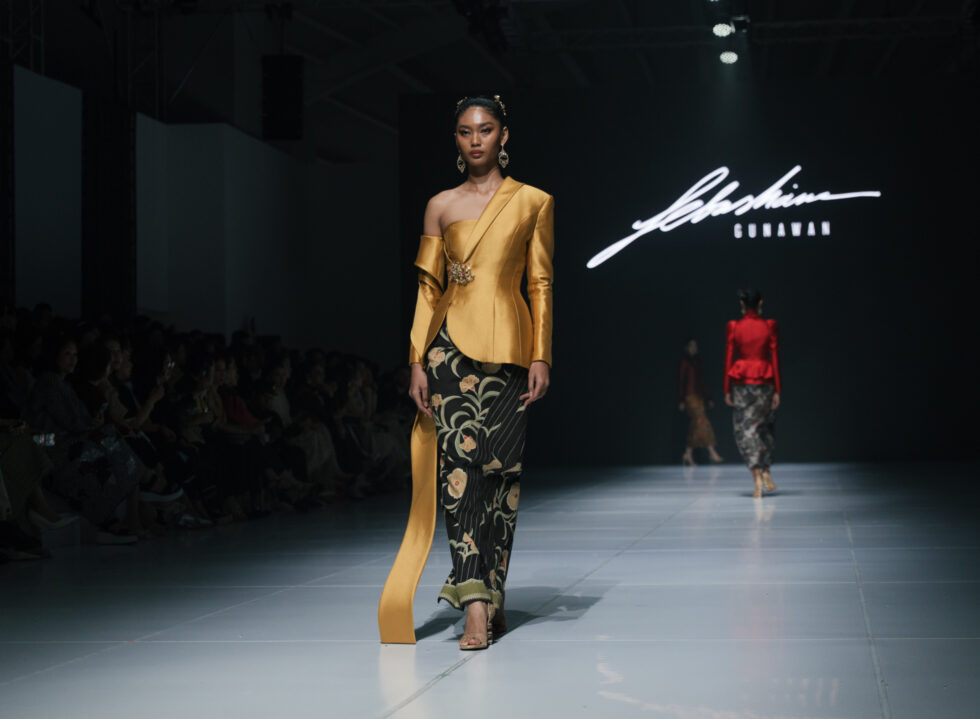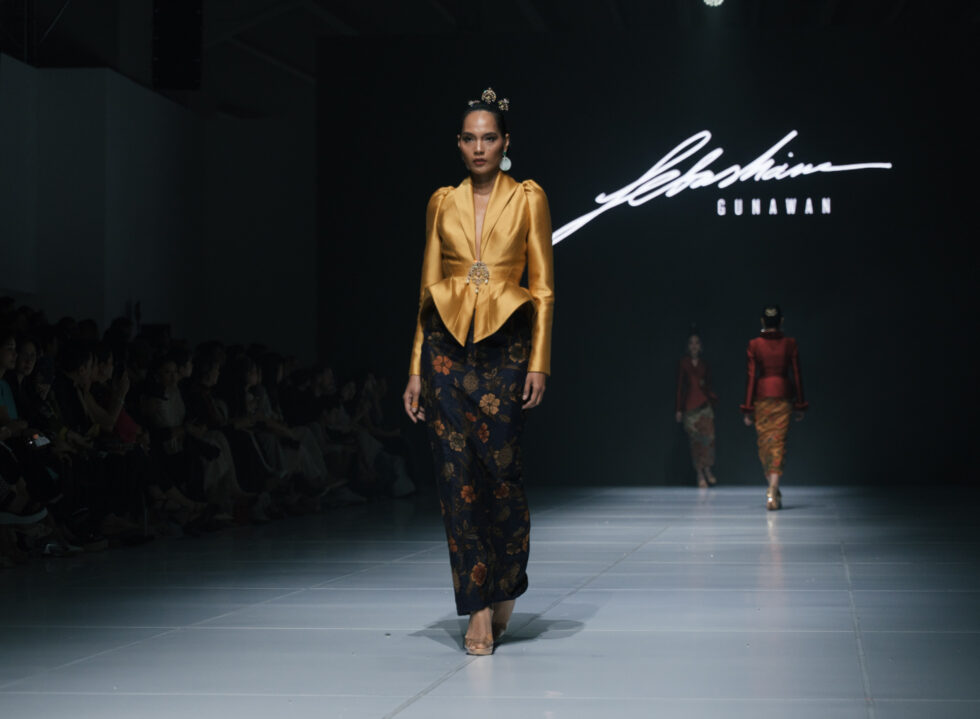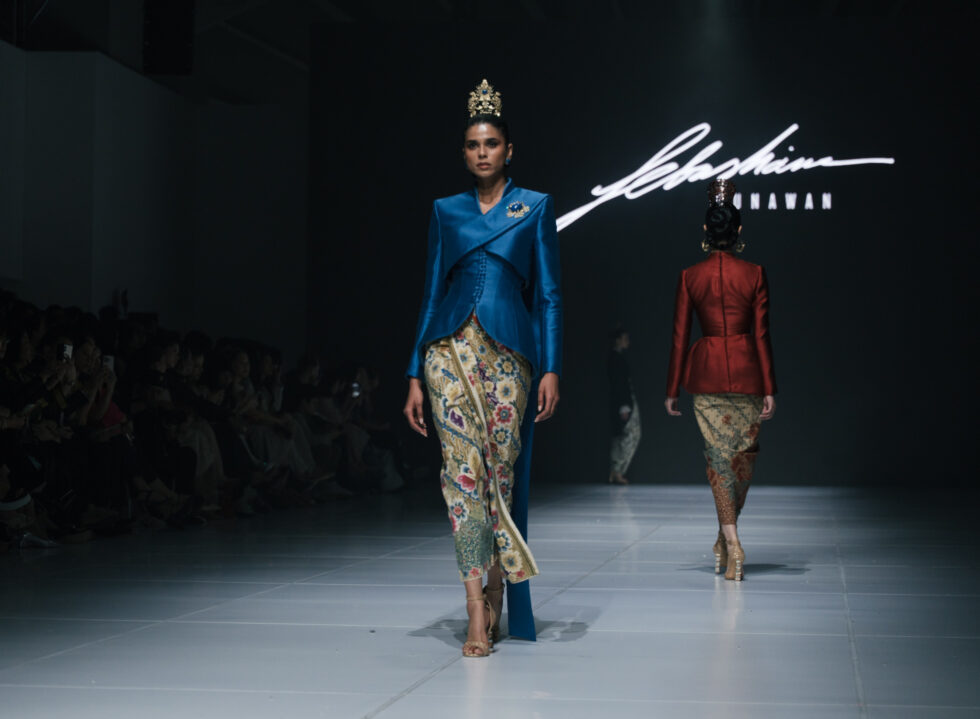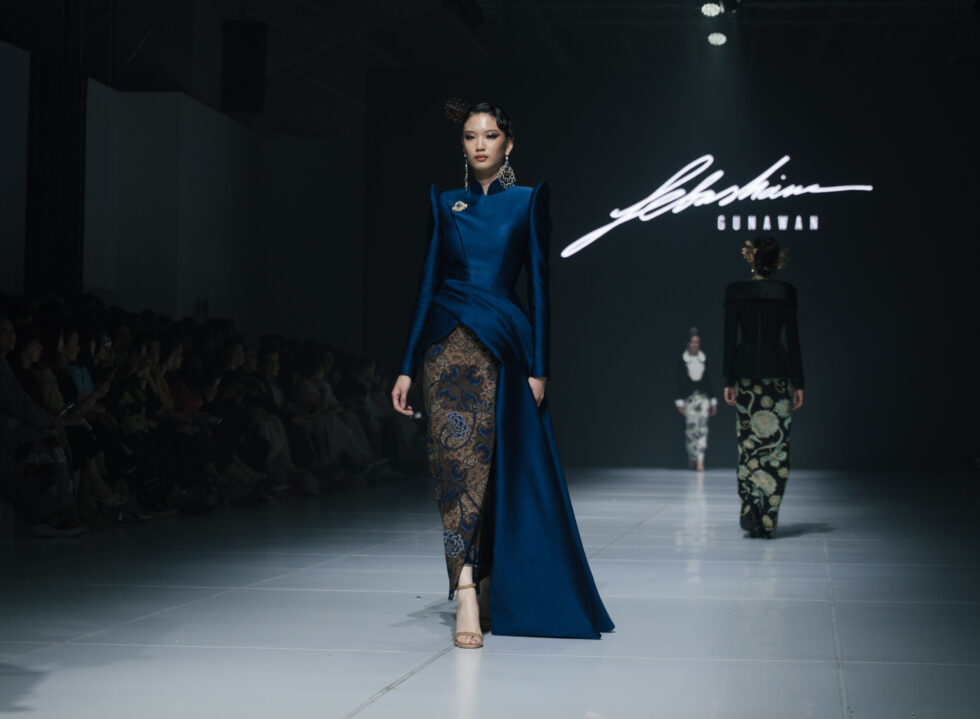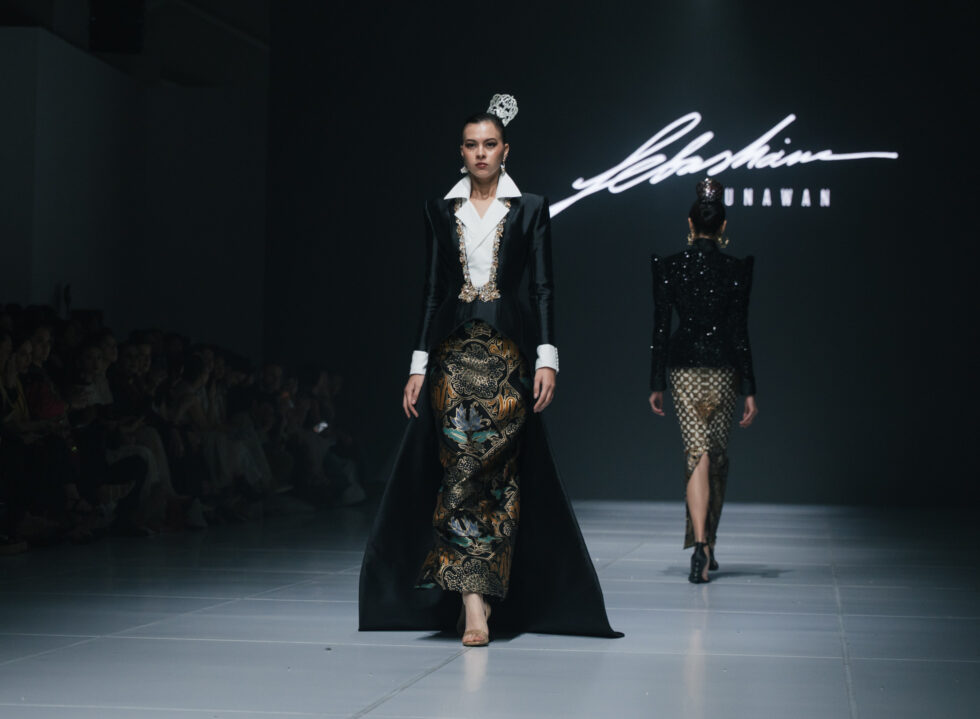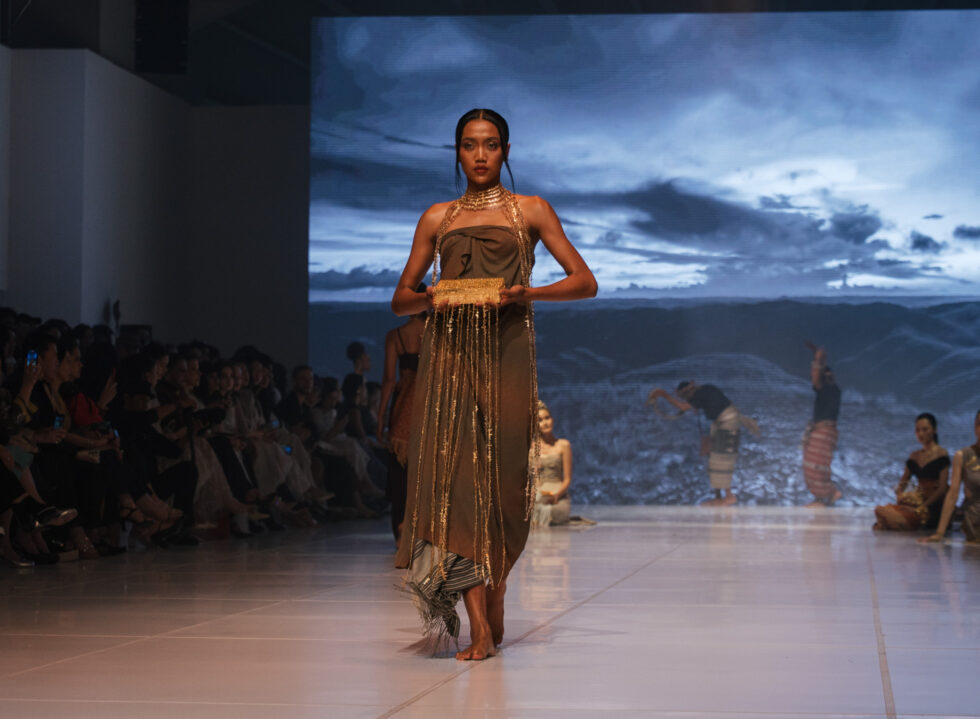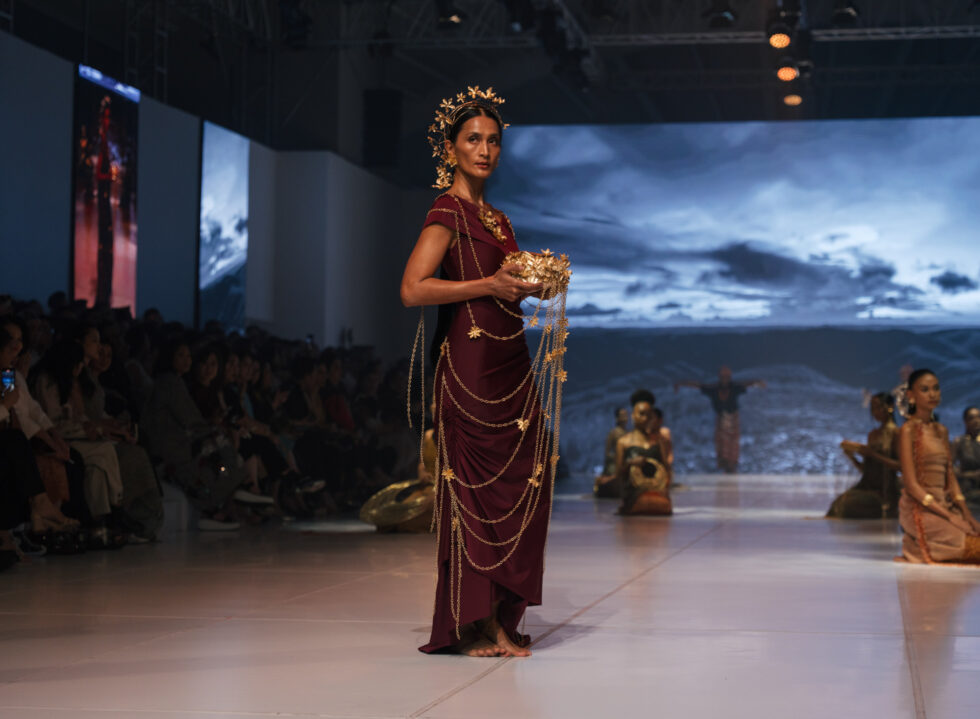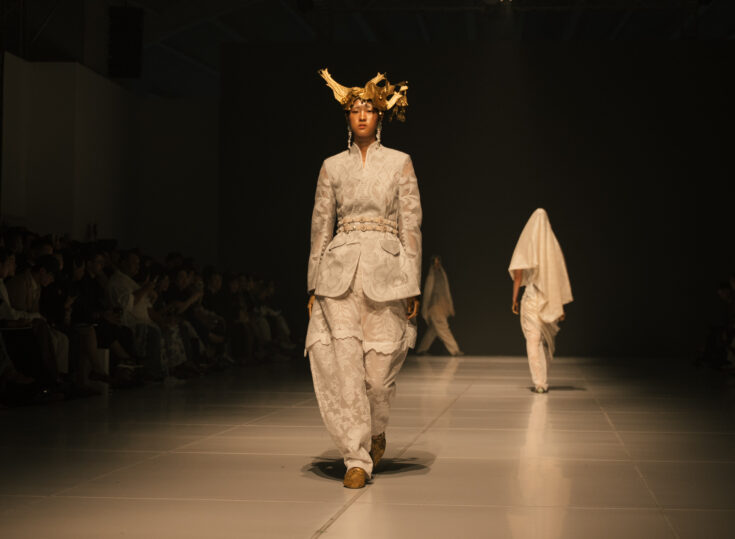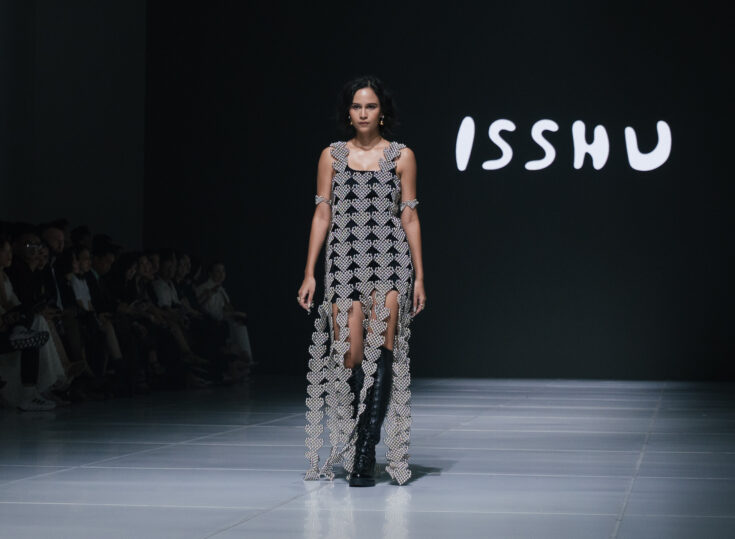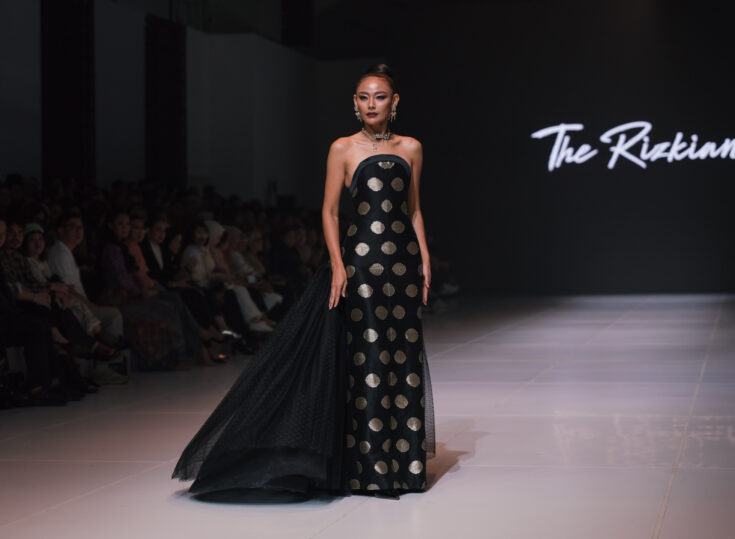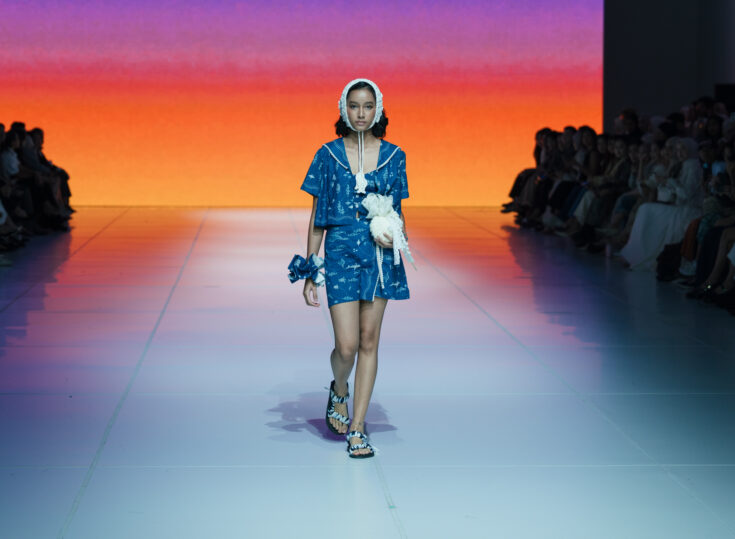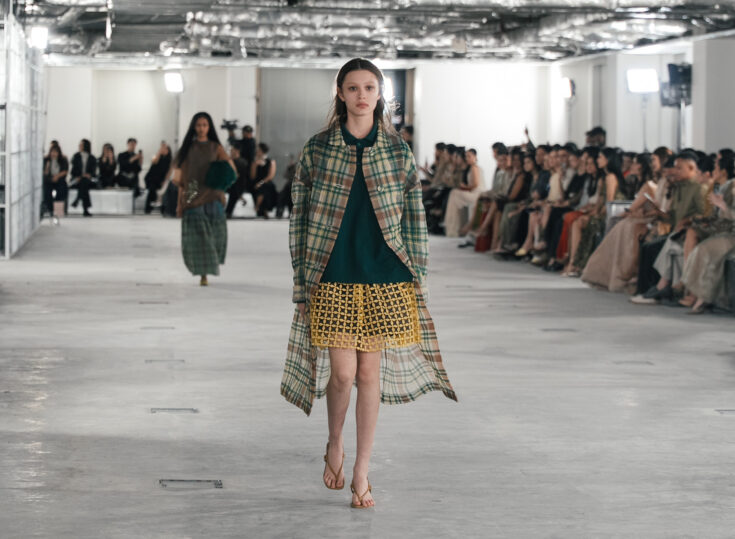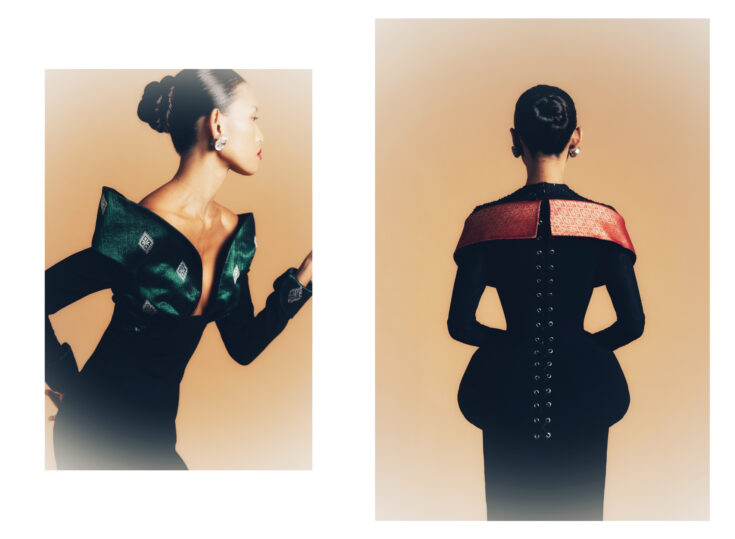It’s a long-standing tradition for the prestigious Dewi Fashion Knights (DFK) to close Jakarta Fashion Week — and this year, the highly anticipated finale continued to spotlight Indonesia’s leading designers, each chosen for their artistry and cultural resonance. Under the theme of Nusantara, the evening deepened fashion’s ongoing conversation with culture, context, history, and identity.
Zico Halim and Margaretha Novi of Tangan Privé — an extension of Tangan that focuses on bespoke design with a stronger nod to tradition — presented a balanced study on how heritage can advance alongside contemporary dressing without losing its soul. They eased the attitude, especially in pieces that nodded to occasion wear, such as weddings, where the mood felt refreshingly light yet composed and familiar.
Most notably, the duo captured the spirit of the modern dresser — one who gravitates toward ease and effortlessness, who wants to look polished without appearing overly considered. Take the fitted steel-gray jacket top with a portrait neckline embellished with discreet beading, paired simply with a batik skirt. It’s the kind of piece that works for various formal ceremonies, say an international conference, especially when styled with sharply cut wide-leg trousers and hair pulled neatly into a ponytail.
Auguste Soesastro of KRATON followed with a poignant, deeply reflective interpretation of the Nusantara theme. Looking to Sumatra, he dug beyond the visual tropes of traditional textiles and patterns to explore something more elusive: the feeling that Indonesia’s identity cannot — and should not — be distilled into a single defining image. The collection refused to be confined by one reference or region, instead inviting layered interpretations from its audience.
Under Auguste’s exacting touch and discerning eye, the clothes existed in that liminal space between tradition and modernity while achieving form without rigidity. One of the most moving gestures came at the runway’s end, when models removed their outer layers to reveal the garment beneath. It felt like a quiet metaphor for Indonesia’s diasporic history — generations who arrived from elsewhere, shedding and reshaping their identities, forming new ones that continue to evolve today.
Toton Januar of TOTON took the opposite route, eschewing traditional textiles altogether and presenting a thought-provoking collection that challenged long-held assumptions about what defines Indonesian design. While he drew from Acehnese culture for reference, his focus was less on representation and more on expanding the conversation: what makes a design truly Indonesian? Is it the colors, the embellishments, the materials, or something far less tangible?
Toton reached a heightened artistic expression by intentionally restricting his tools, working exclusively with recycled and upcycled materials. The opening look –– a pantsuit covered with hand-dyed floral lace, deliberate rip detailing, and fringed beading that mimicked soft fraying, paired with a headwrap and golden makeup, was a visual feast that immediately set his idea in motion. He amplified the mood further with warm, golden-orange lighting bathed the models as if drenched in an eternal golden hour.
One of the most gratifying aspects of TOTON’s evolving body of work is the designer’s innate ability in world-building. Each collection is an invitation into his imagined utopia. Viewed collectively, his shows form a kind of visual compendium: each alluding to a different “tribe,” and all together shaping Toton’s very own vision of an Indonesia defined not by uniformity, but by multiplicity.
Sri Luce (founder and creative director) and Happy Salma (co-founder and creative conceptor) of Tulola interpreted the Nusantara theme through interwoven references — Bugis culture, nature and womanhood. The presentation also acted as a reintroduction of the brand’s creations from the past three years, bringing their evolving craftsmanship into focus.
But what stood out most were the pieces inscribed with the words of novelist Pramoedya Ananta Toer, taken from Anak Semua Bangsa, the second book in his epic quartet: “Aku ingin menjadi manusia bebas” (“I want to be a free human being”). The phrase cascaded like strings of chain, spilling out from crystal- and gemstone-encrusted jewelry boxes like creeping vines. Tulola continues to insist that jewelry is more than surface appeal — it is adornment as language and an archival vessel for feeling.
Sebastian Gunawan and his wife Cristina Panarese looked to the humble kebaya as the starting point for their Sebastian Gunawan Signature show. The husband-and-wife duo kept things straightforward, but no less captivating, by focusing on giving the typically soft silhouette of the kebaya blouse a more structured form.
To wit, a jade-green kebaya jacket with pagoda shoulders captured a sharp formality, softened by rounded hips and a neatly nipped waist. And although Sebastian and Cristina explored multiple iterations of the kebaya, they deftly demonstrated its range: subtle shifts in tailoring revealed just how much potential still lies within this familiar garment.
One could say the Sapto Djojokartiko collection for DFK plays like a B-side to his Spring/Summer show earlier in September. Here, he continues to refine his language of craft and tradition into something lighter, both in attitude and execution, rounded by a global point of view.
While Sapto drew inspiration from Balinese traditional woven textiles, he wasn’t overly precious with them. Instead, he applied ageing techniques to lend the pieces a worn, lived-in quality, as seen on structured outerwear and asymmetrical skirts. From the moment the show began, models strode out one after another in quick succession, evoking the sensation of people-watching stylish passersby. The process was repeated again during the finale. This time tighter and more charged.
It’s a format Sapto has executed in his past DFK presentations, but here, the confident, rhythmic movement infused the collection with optimism. It felt like a statement, that while Sapto may look to heritage, he refuses to treat it as something static or sentimental. And perhaps it’s through this lens, one that acknowledges history but moves beyond nostalgia, that Indonesian fashion can continue to expand itself, both in national consciousness and on the international stage.
(For extended report on Dewi Fashion Knights 2025, head to our Instagram at @manualjakarta.)
